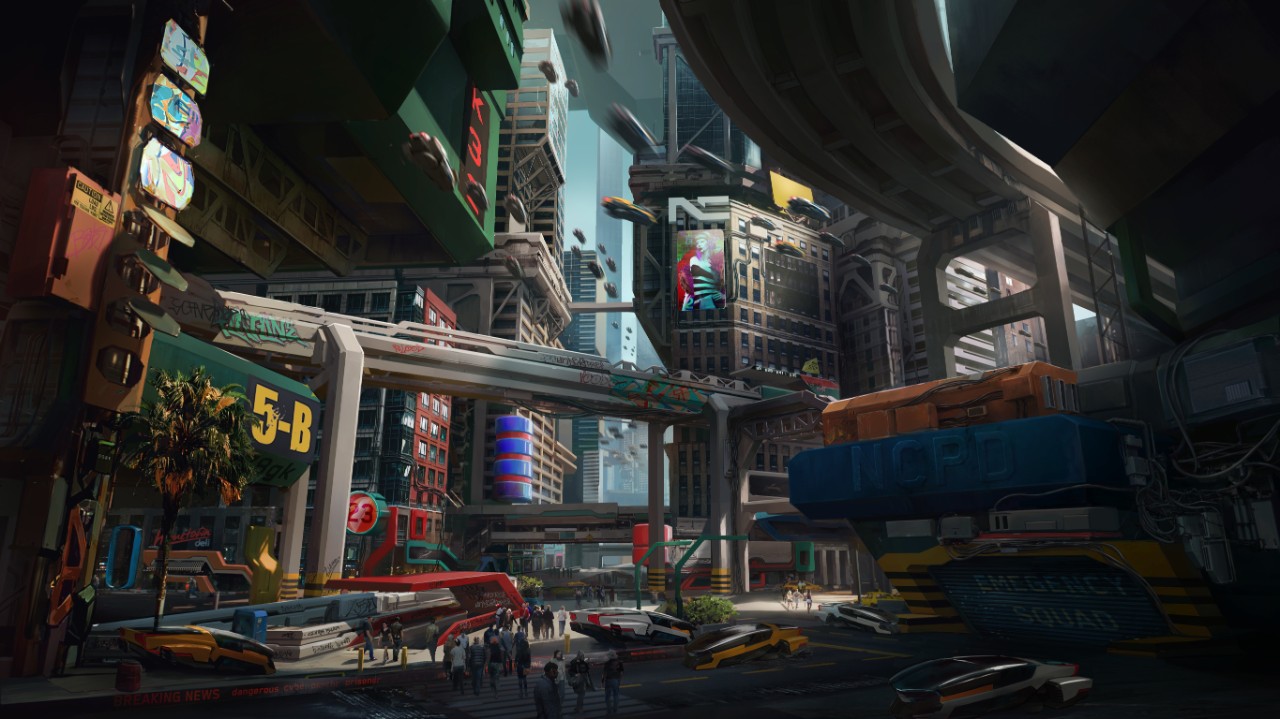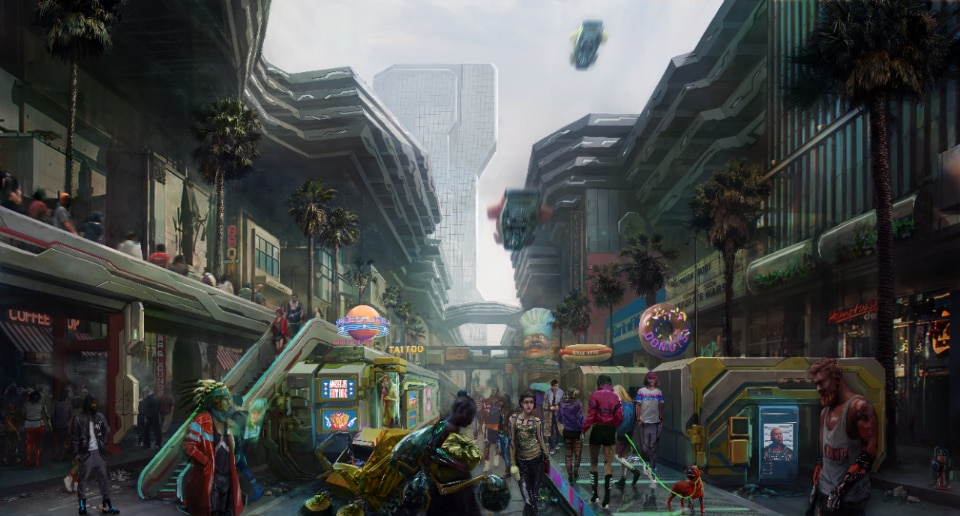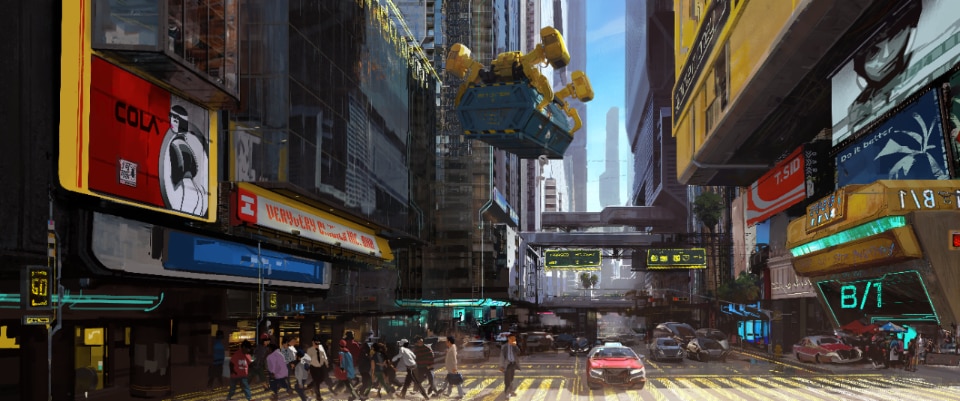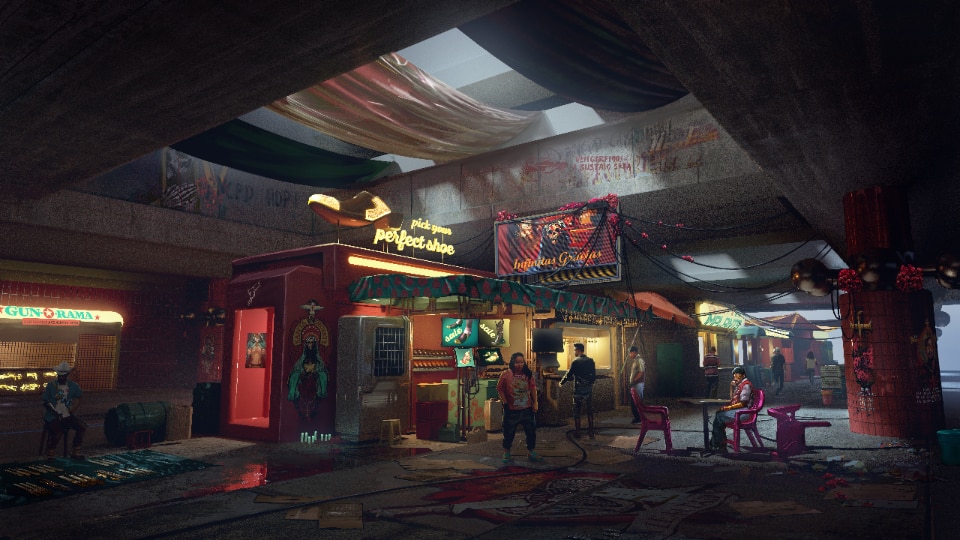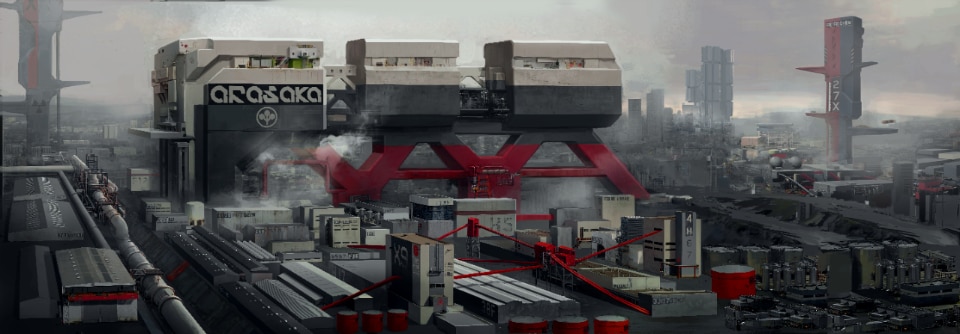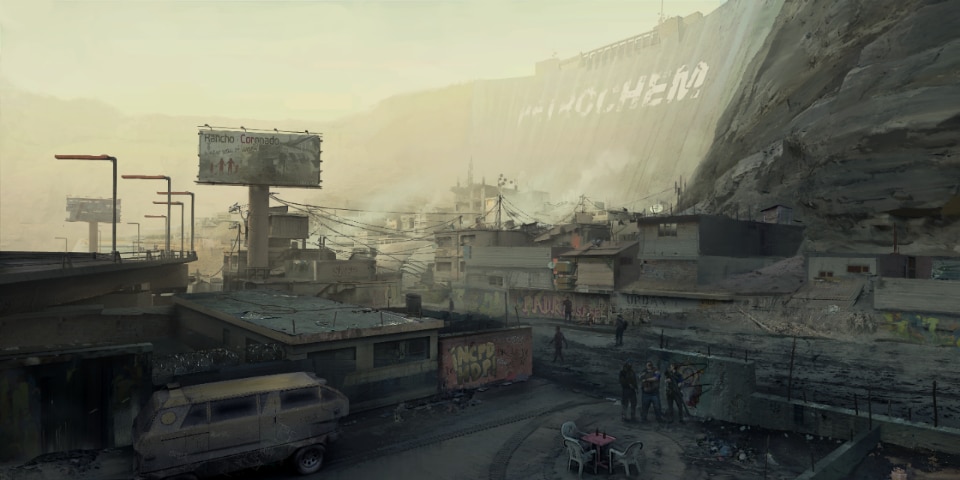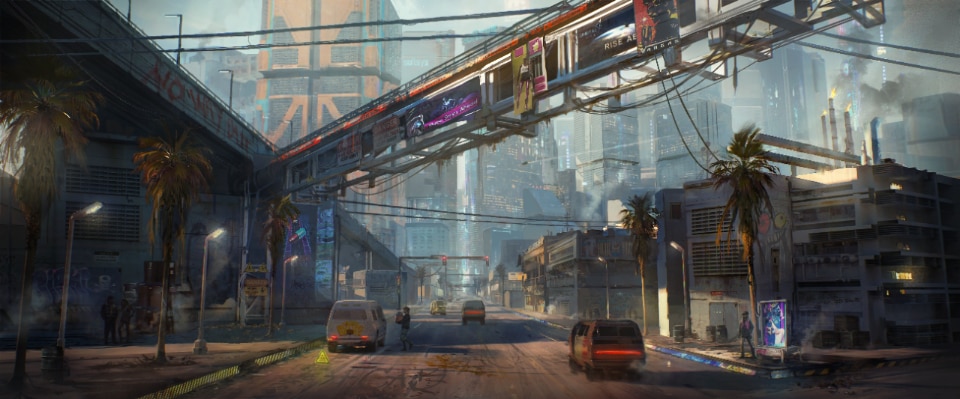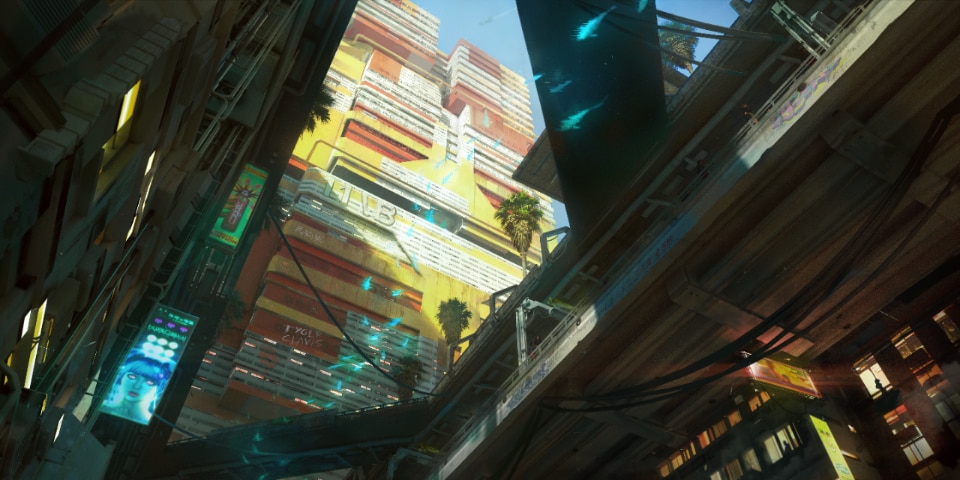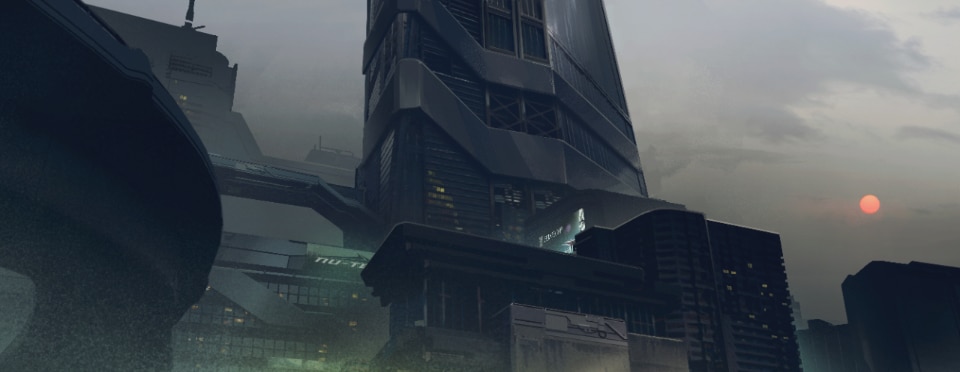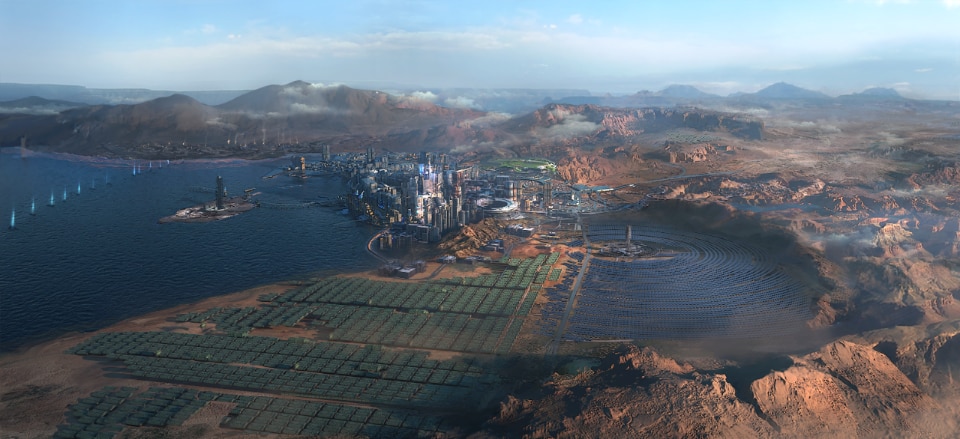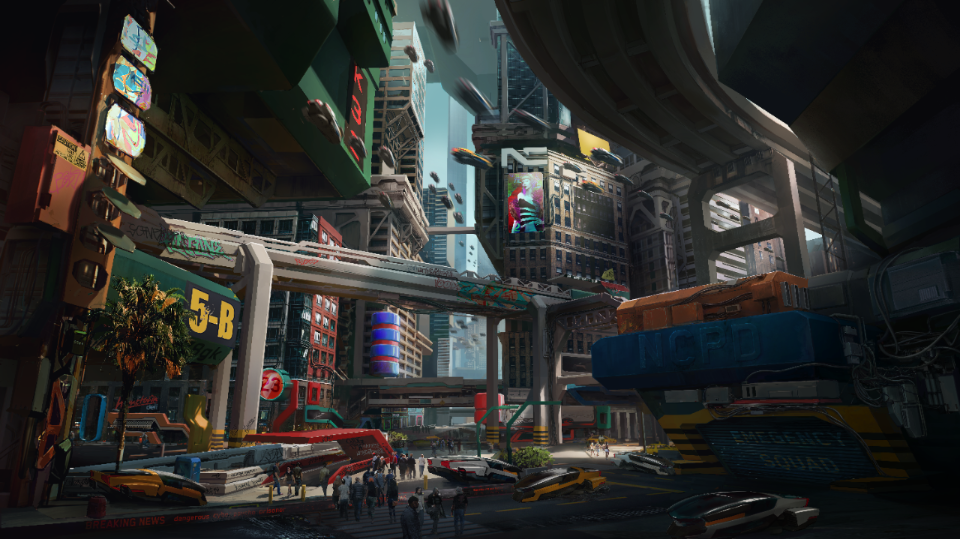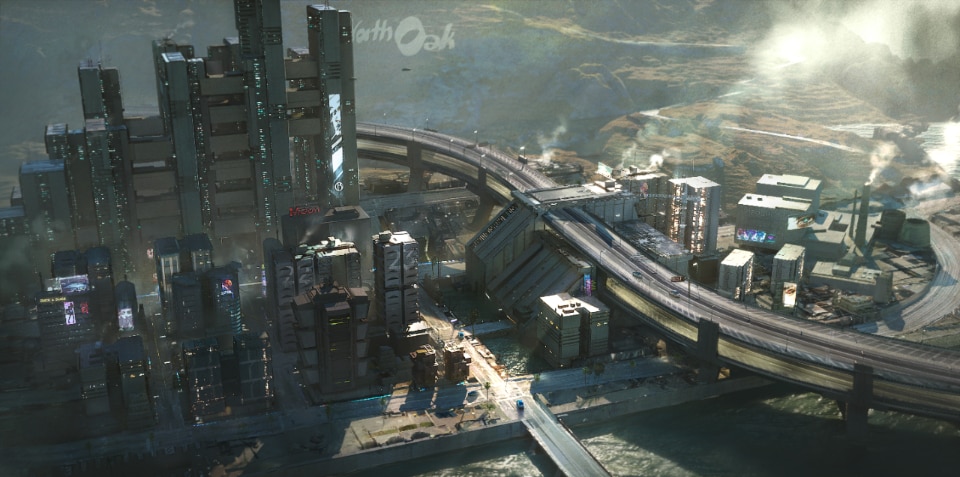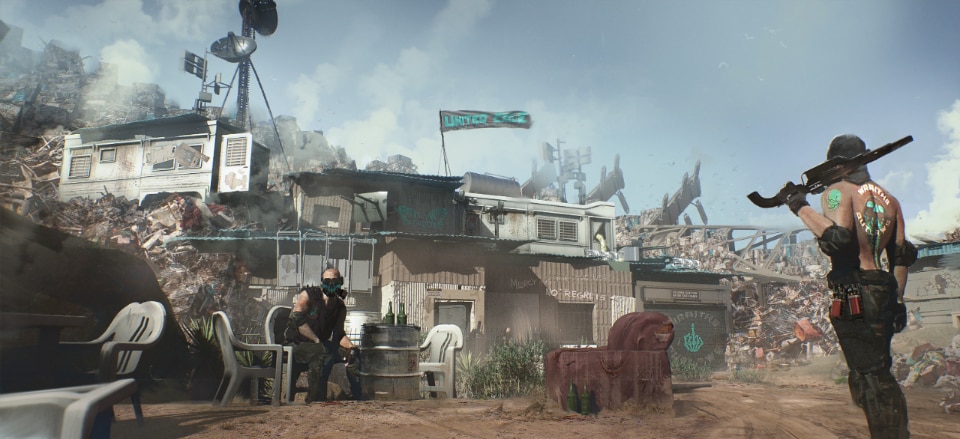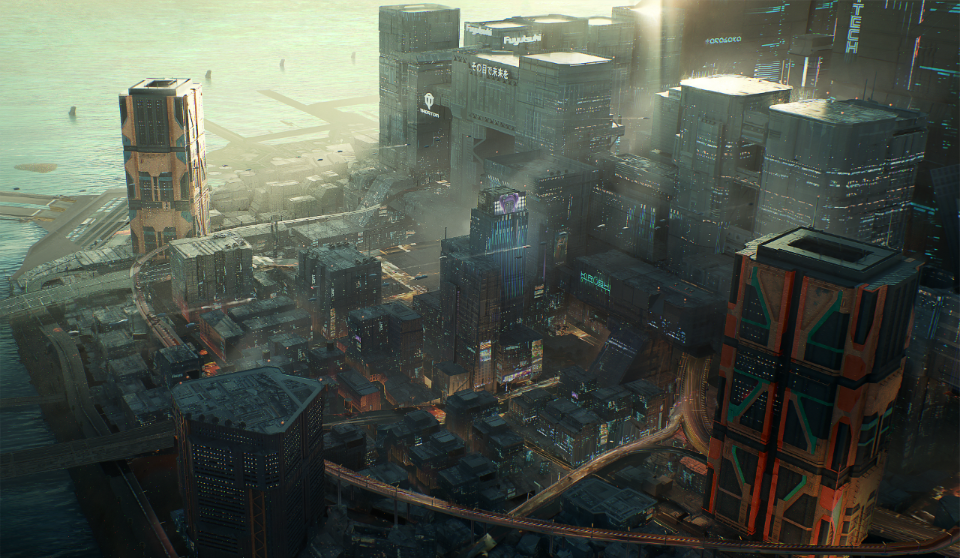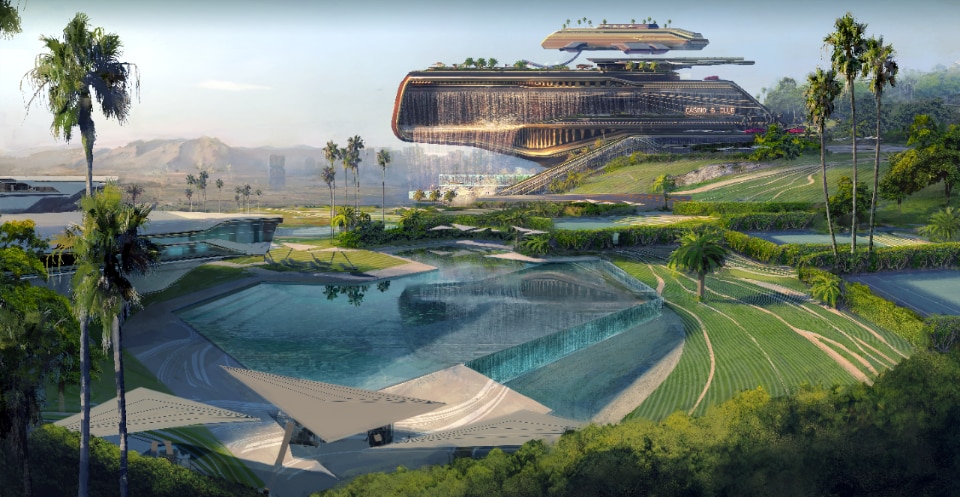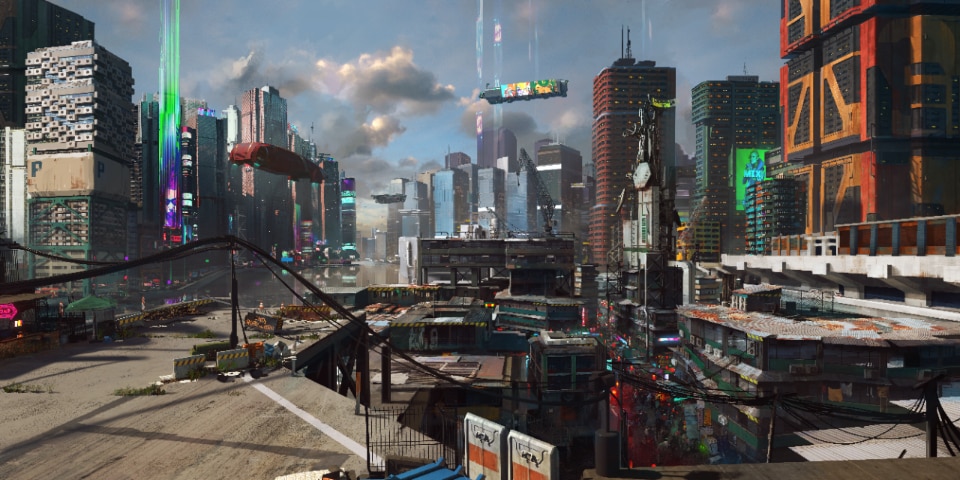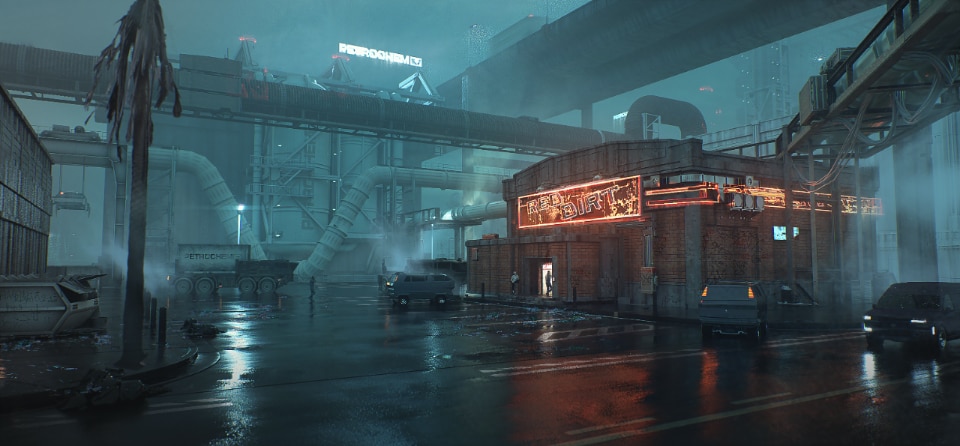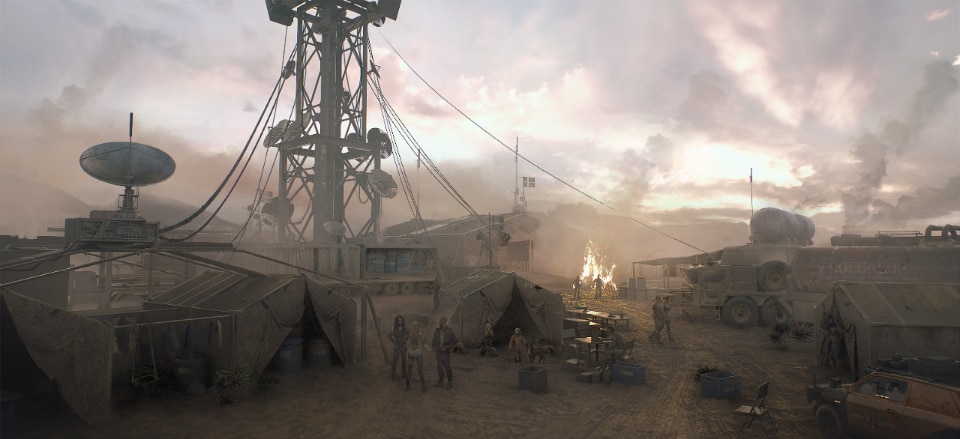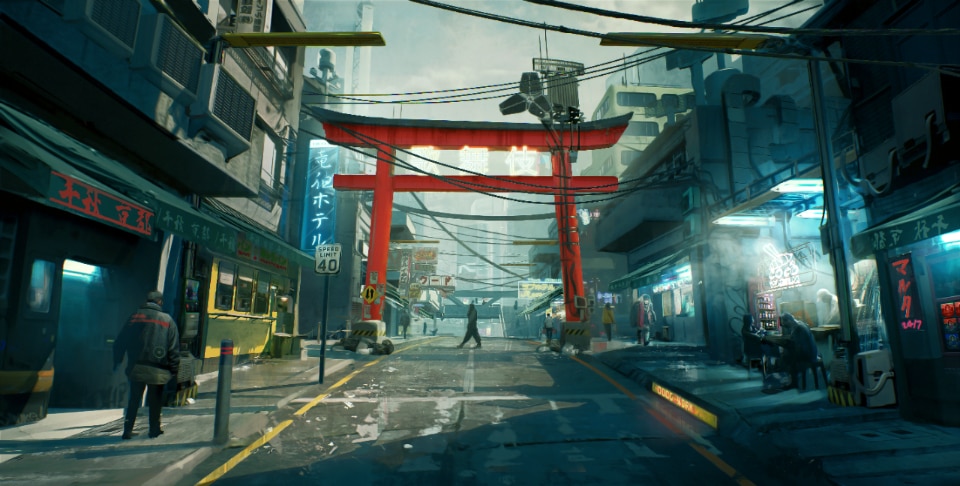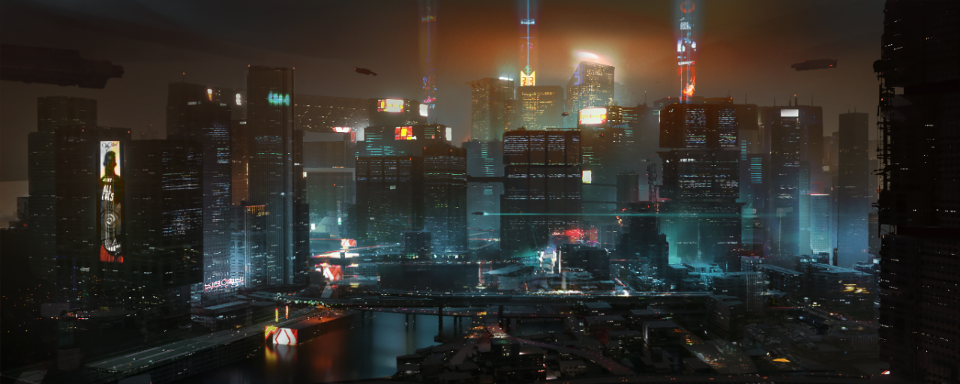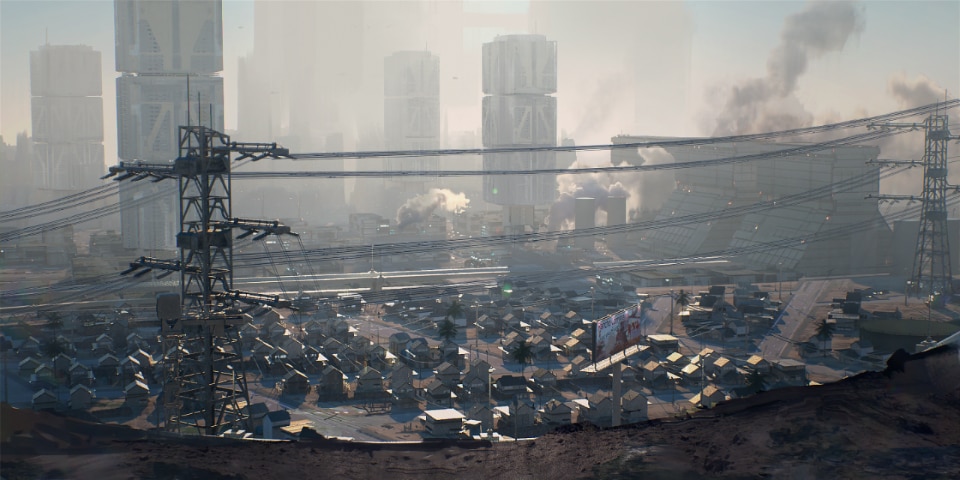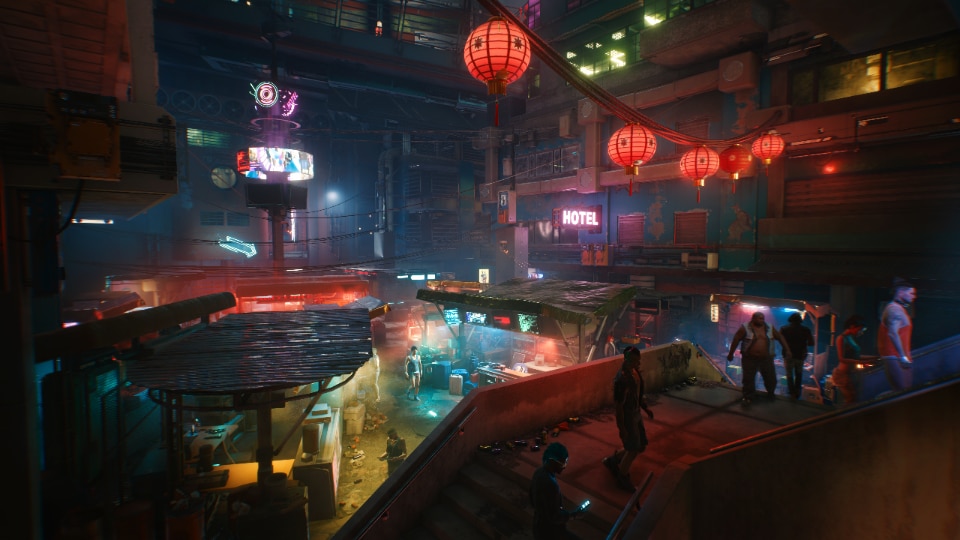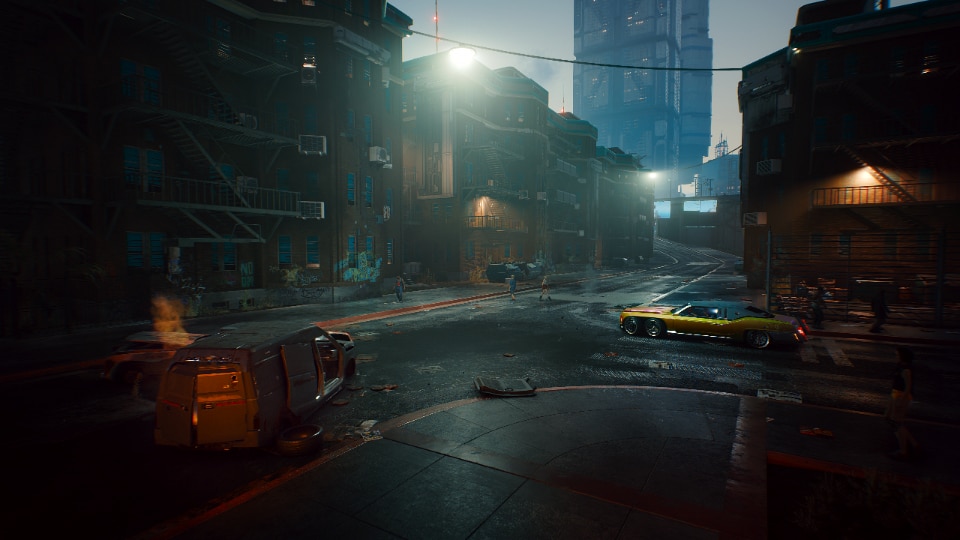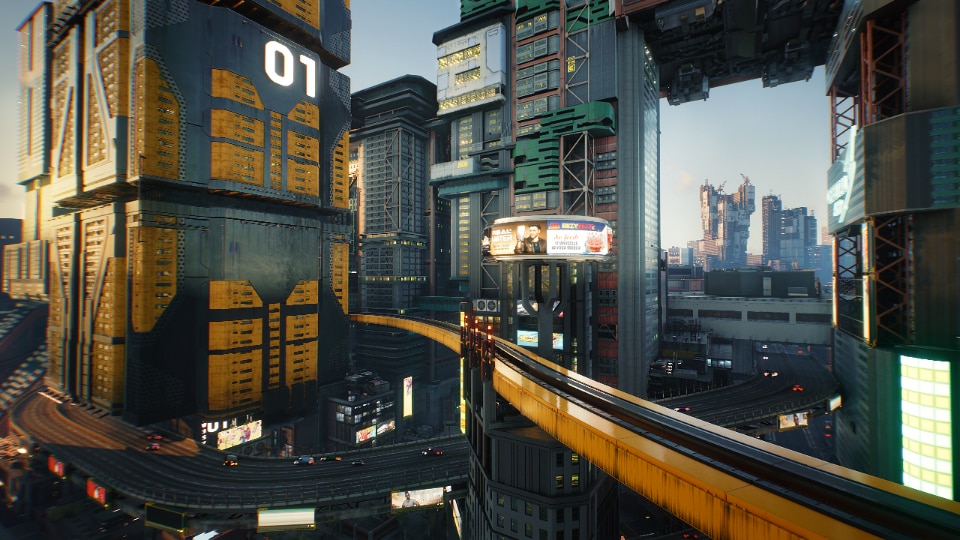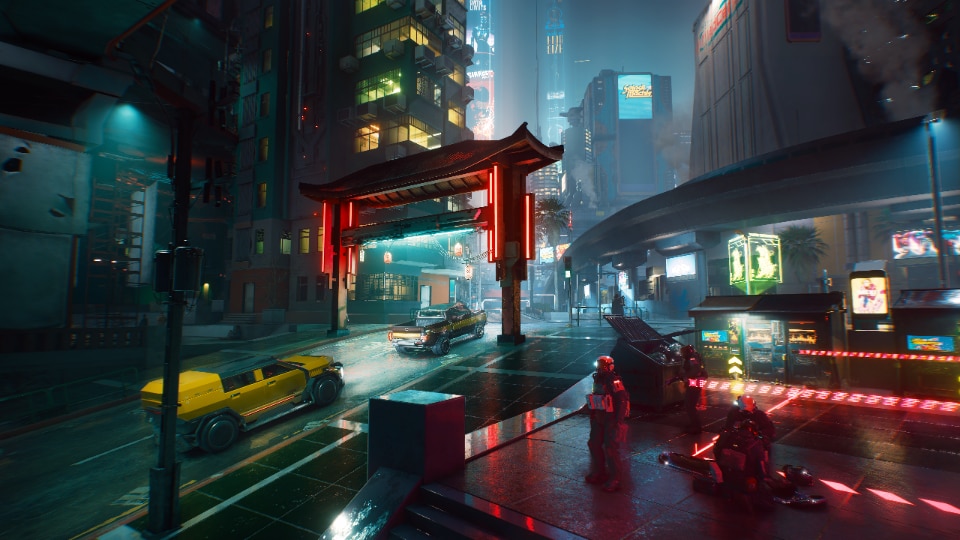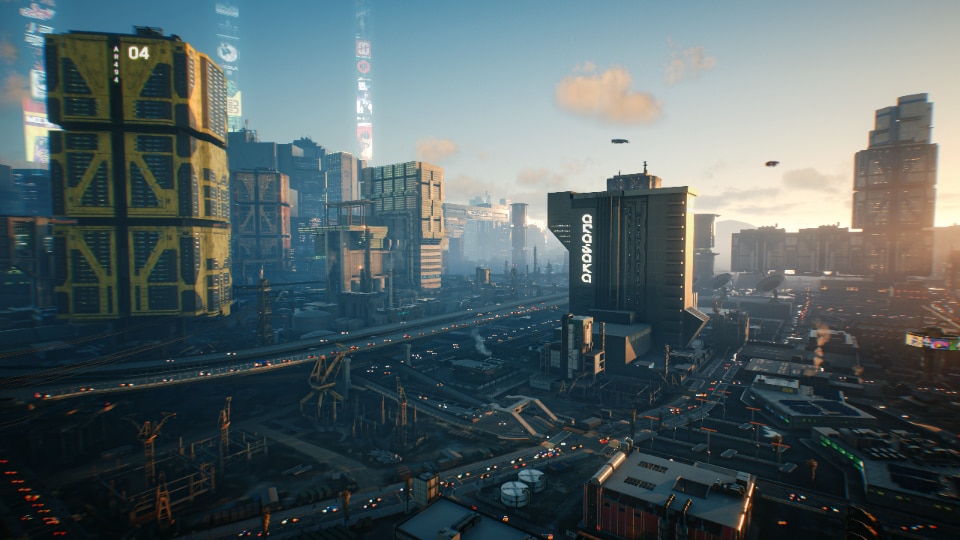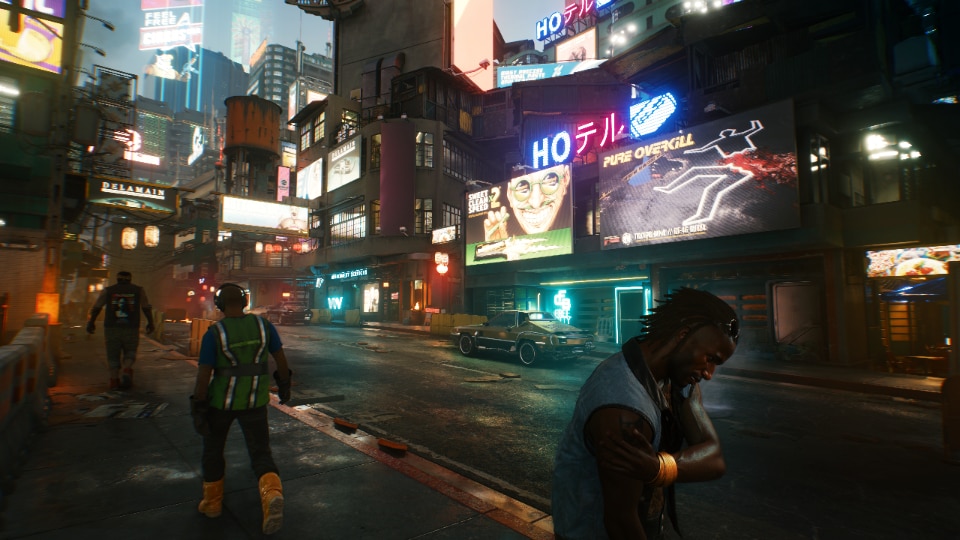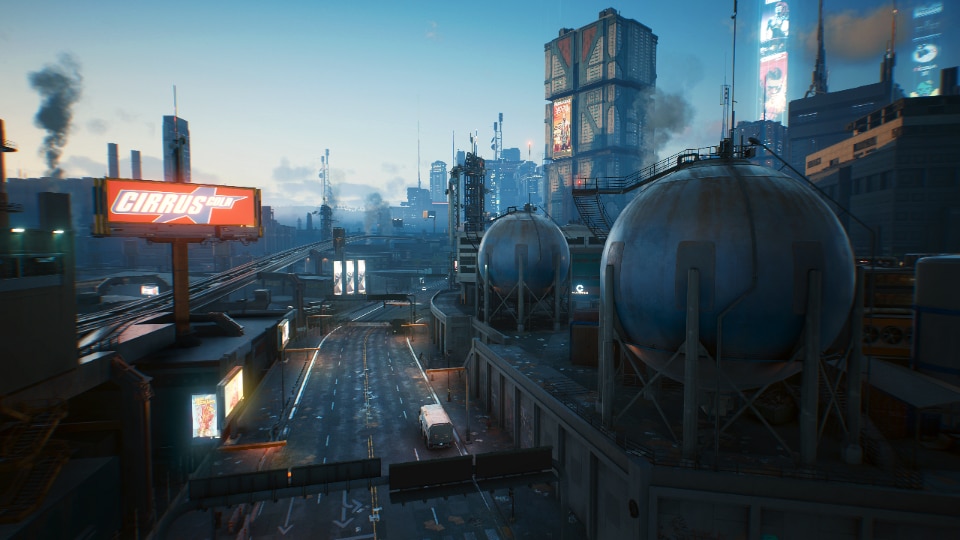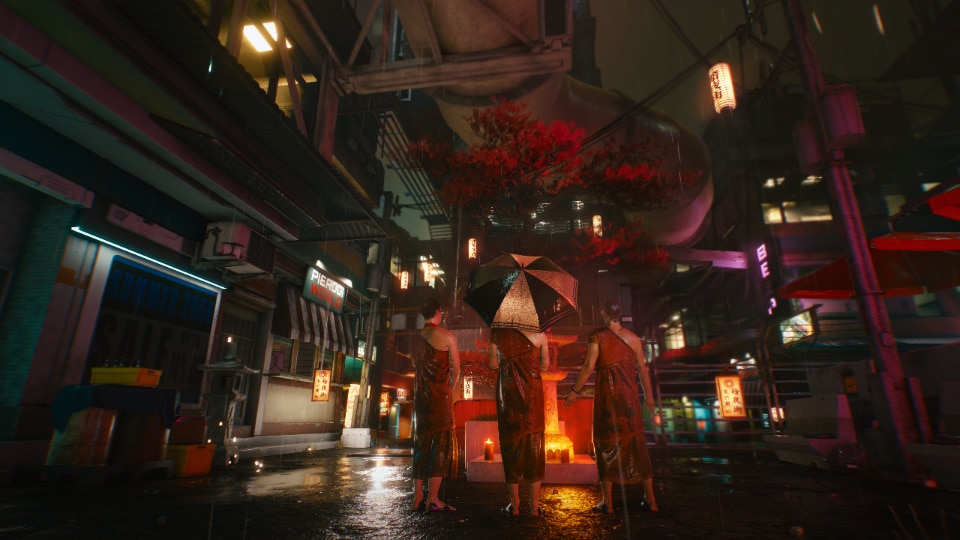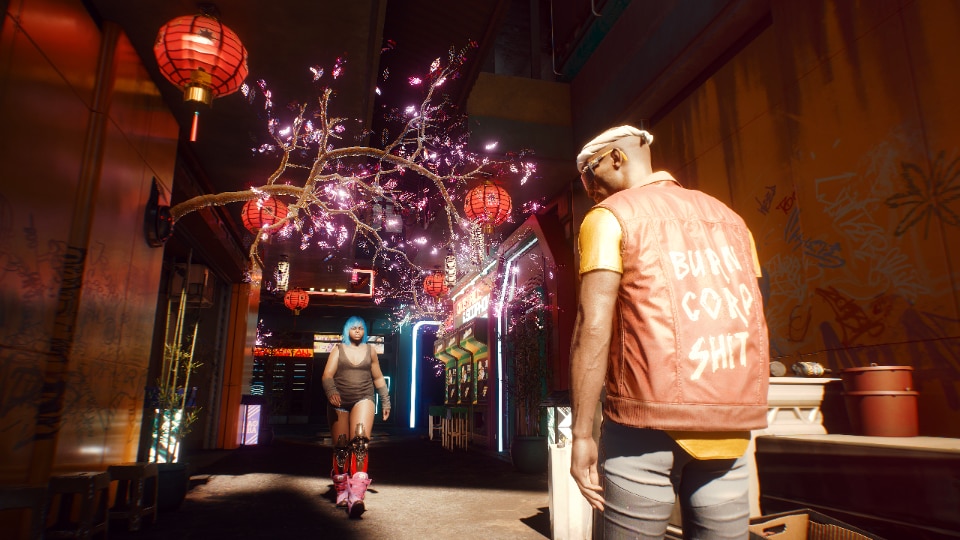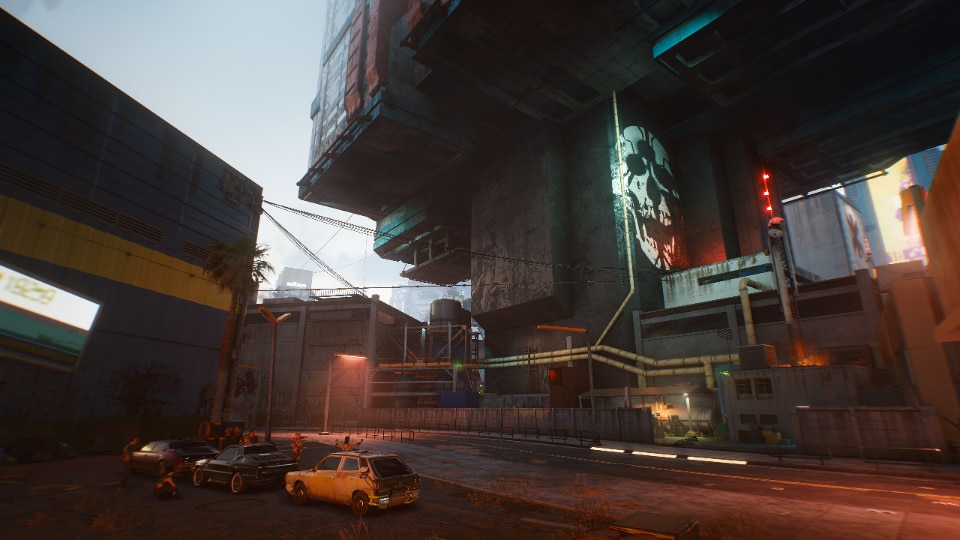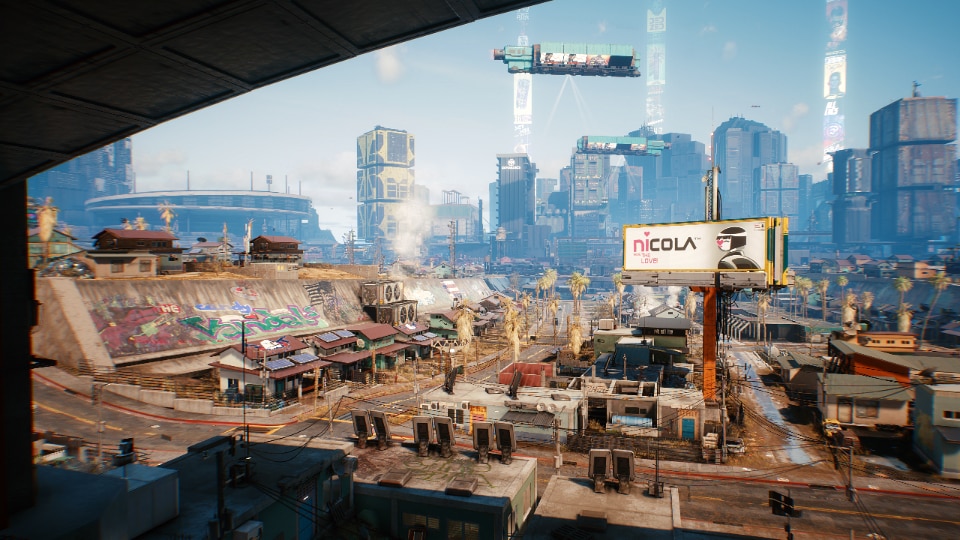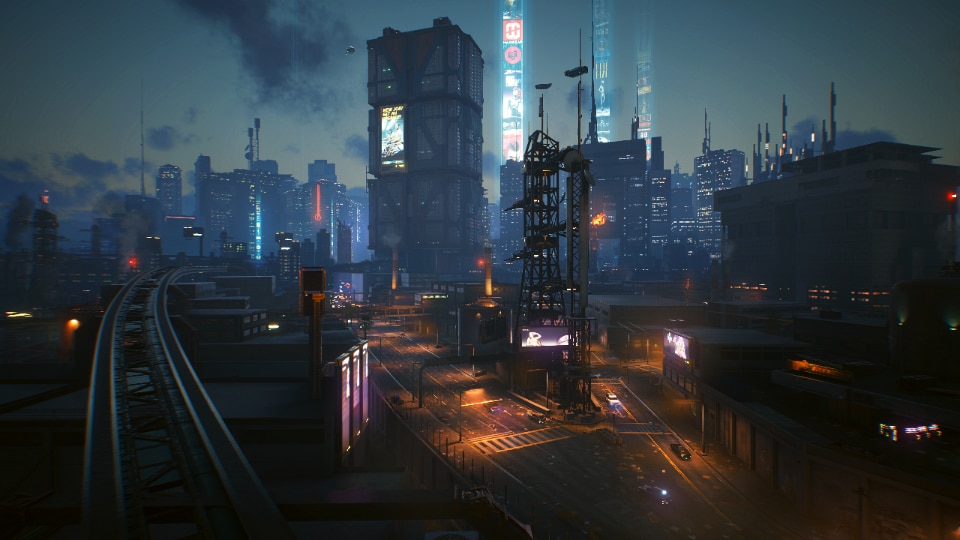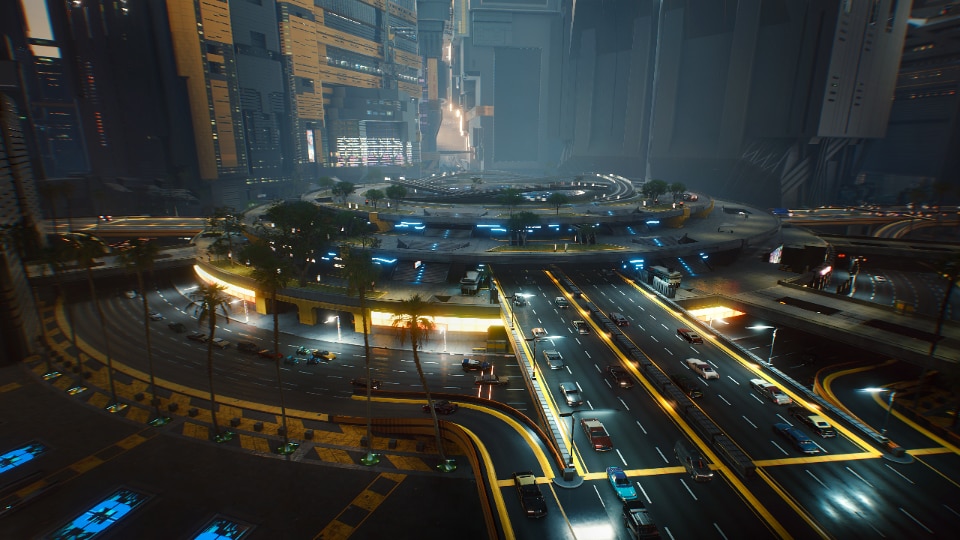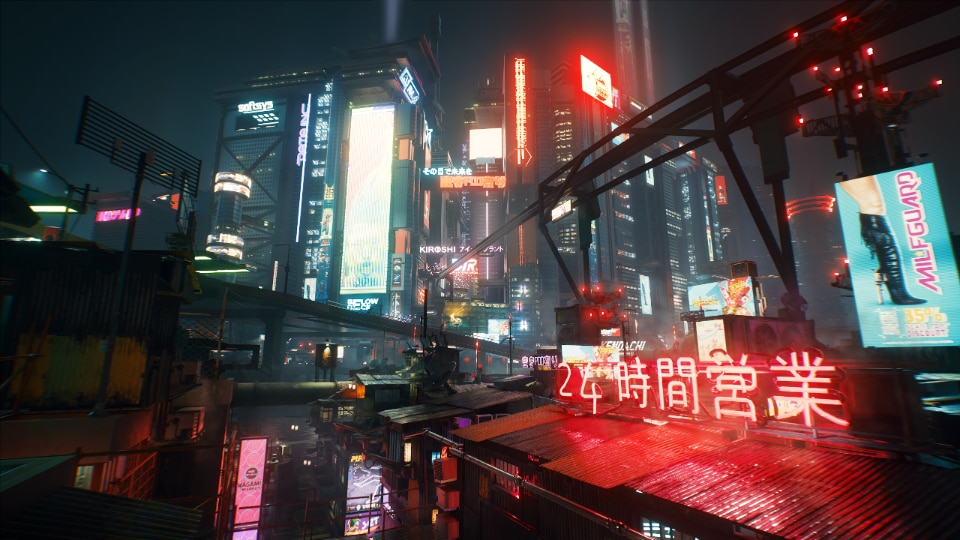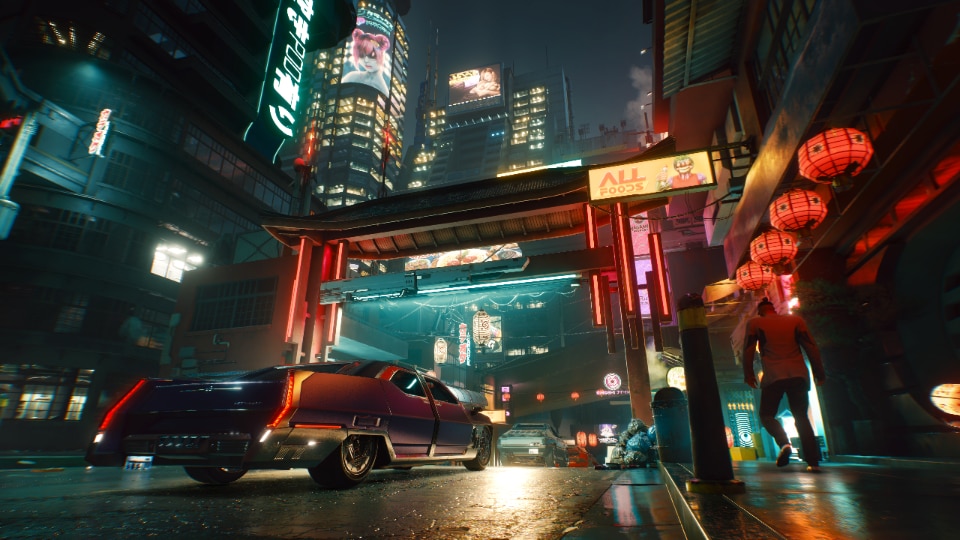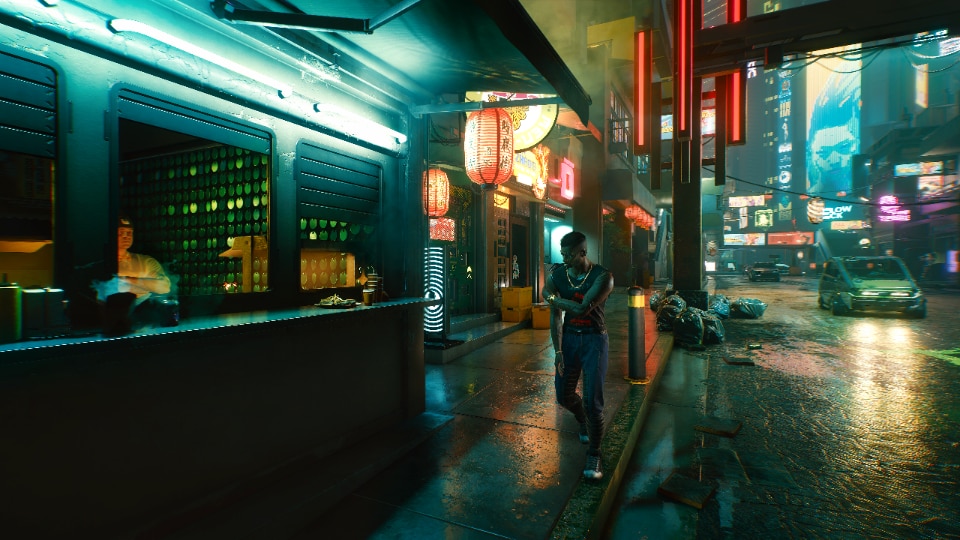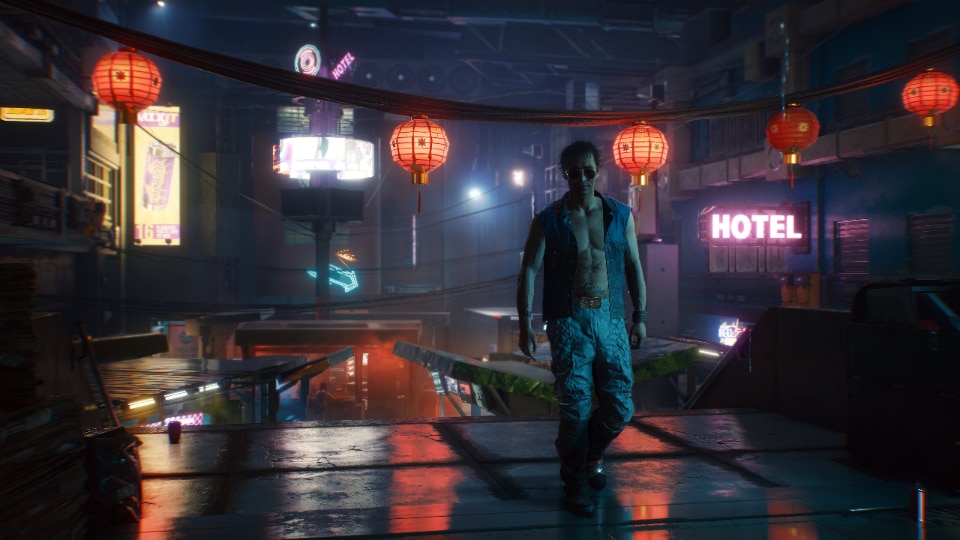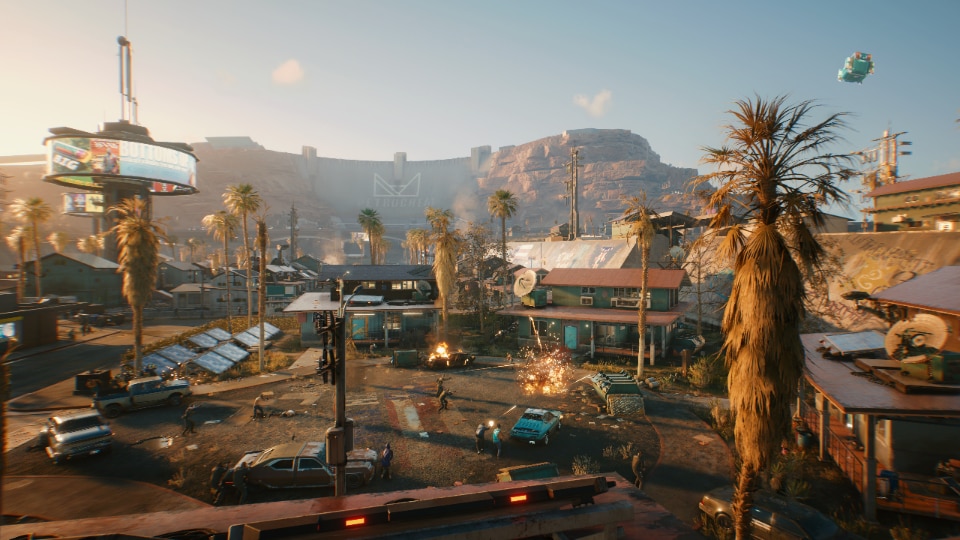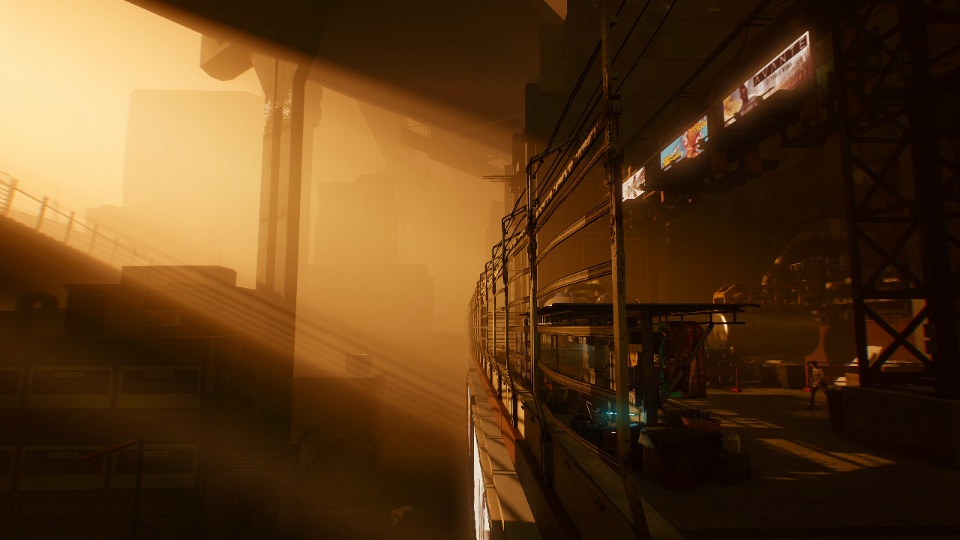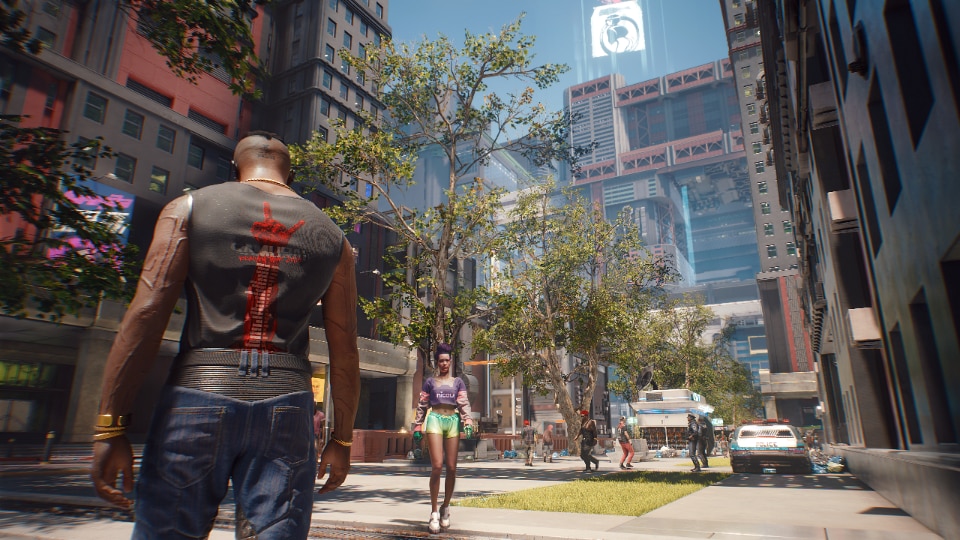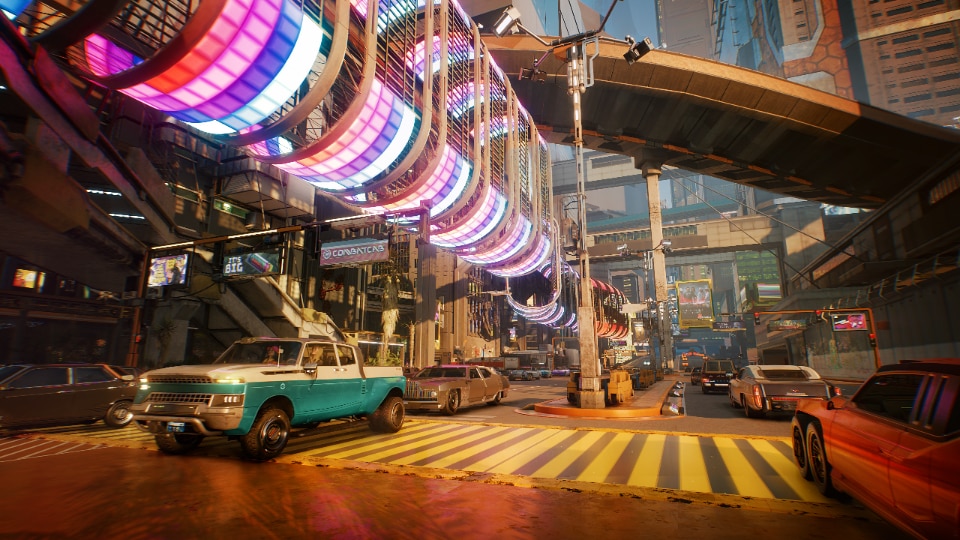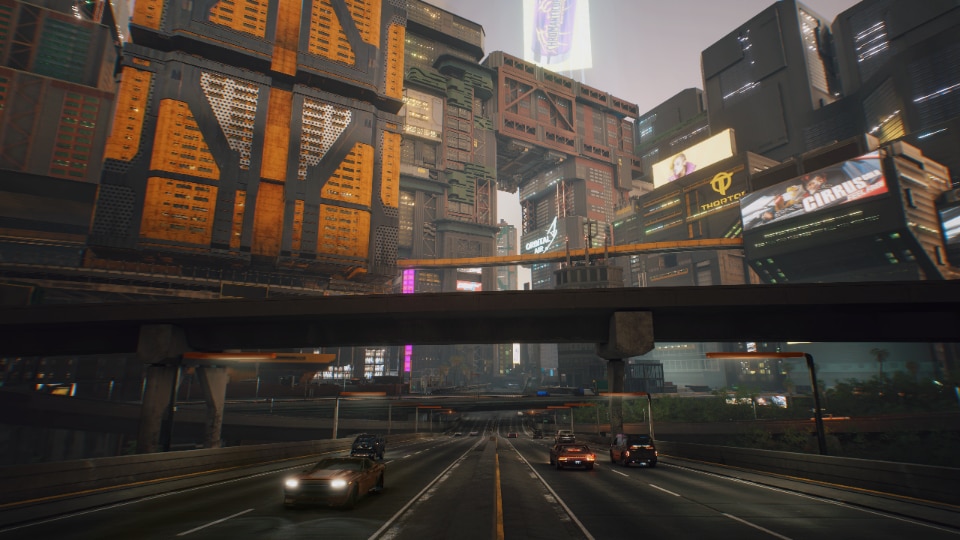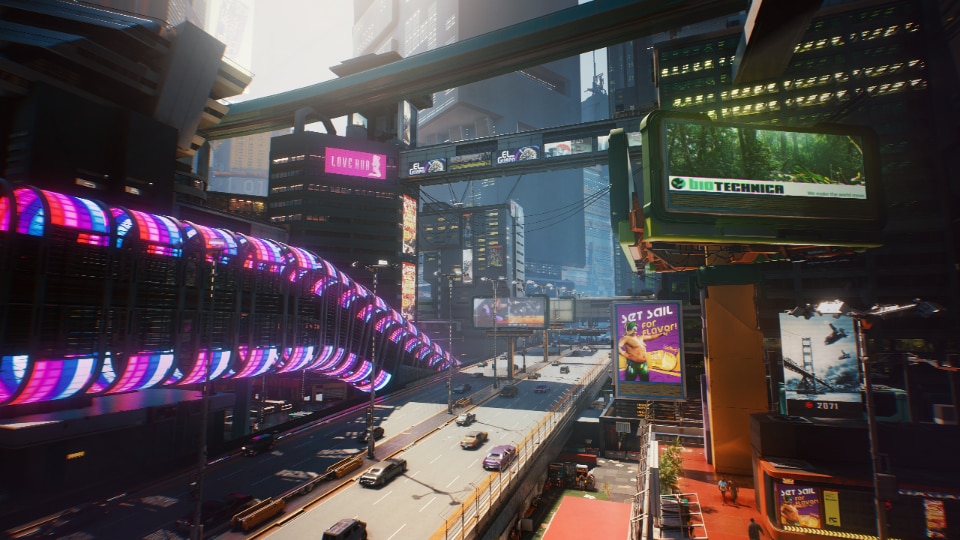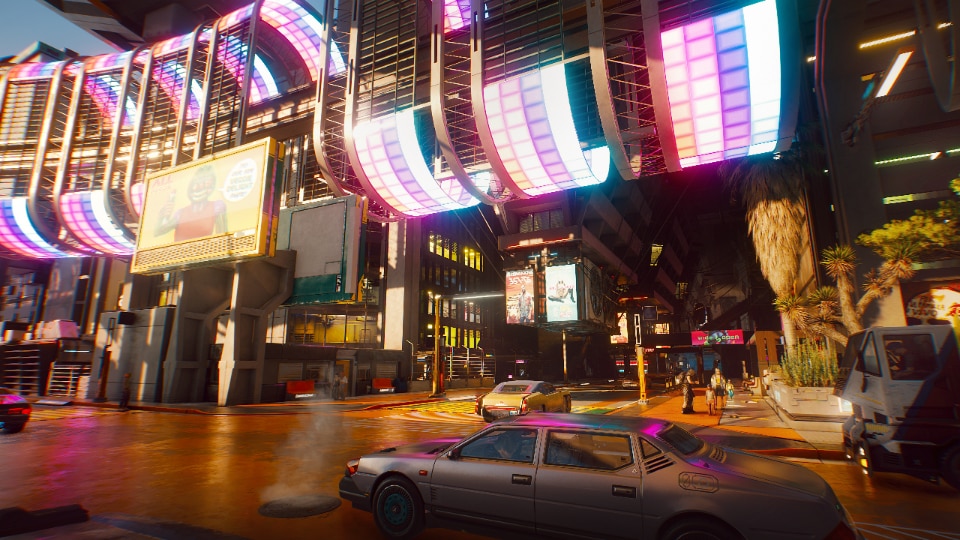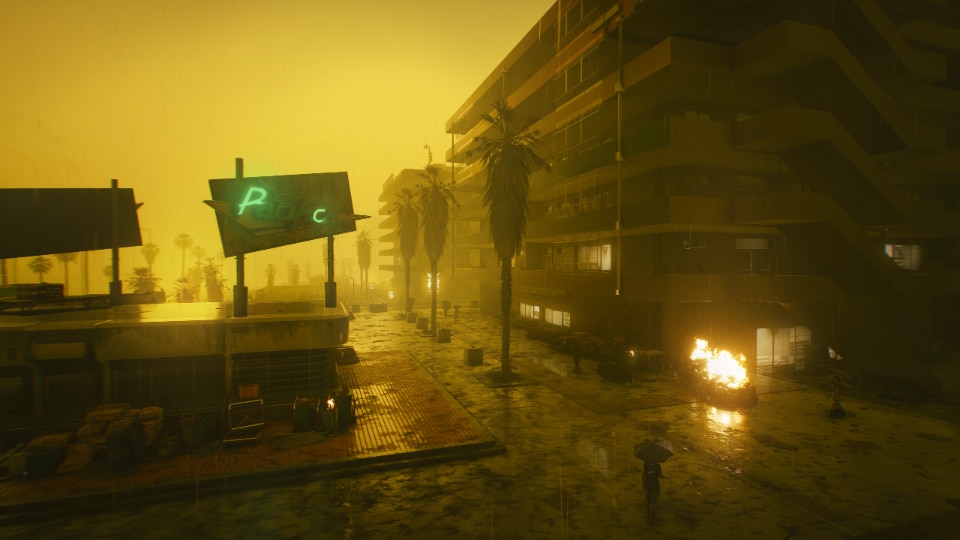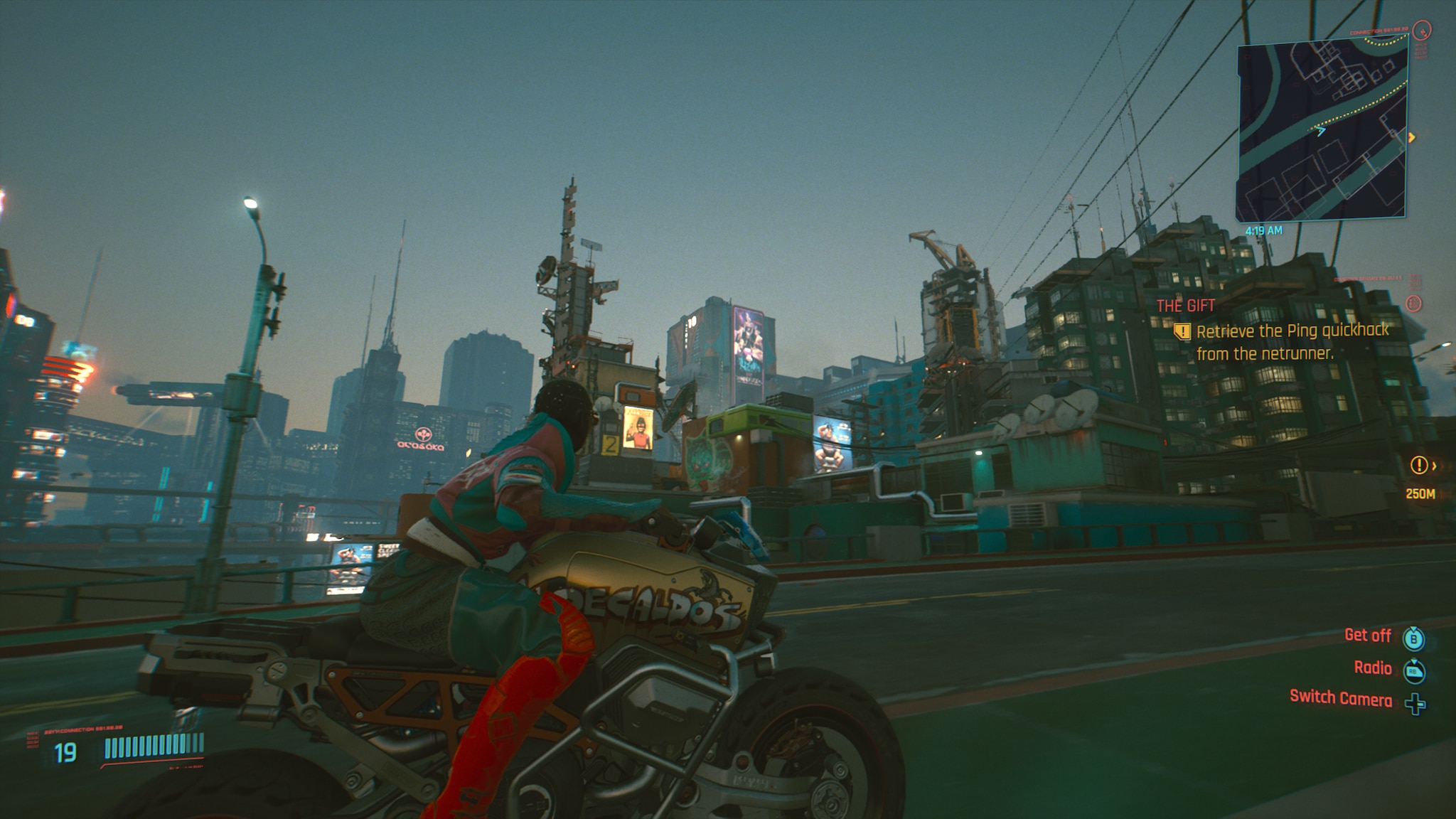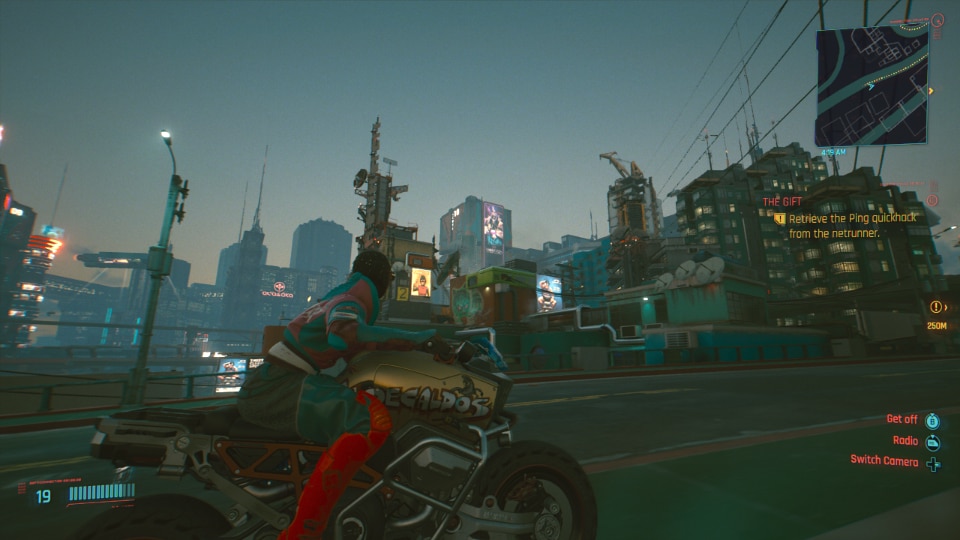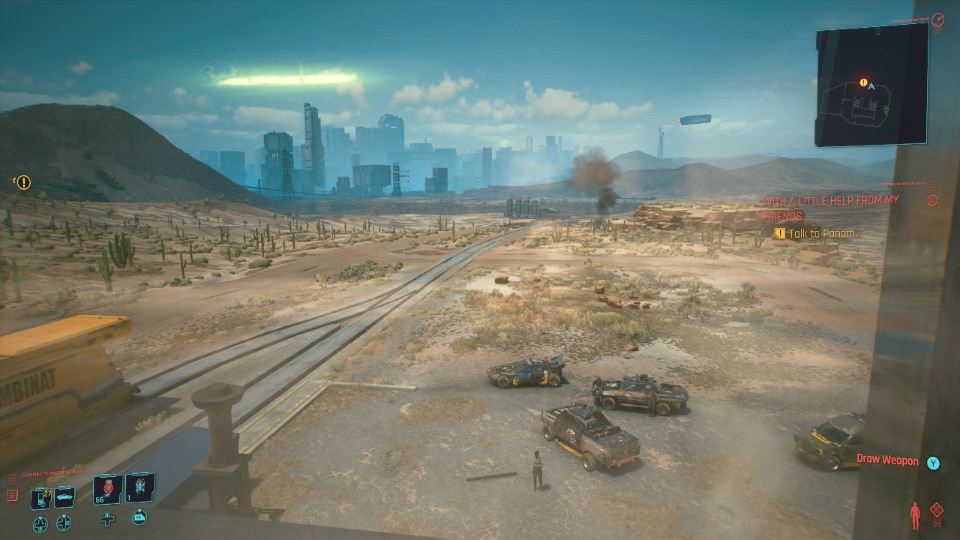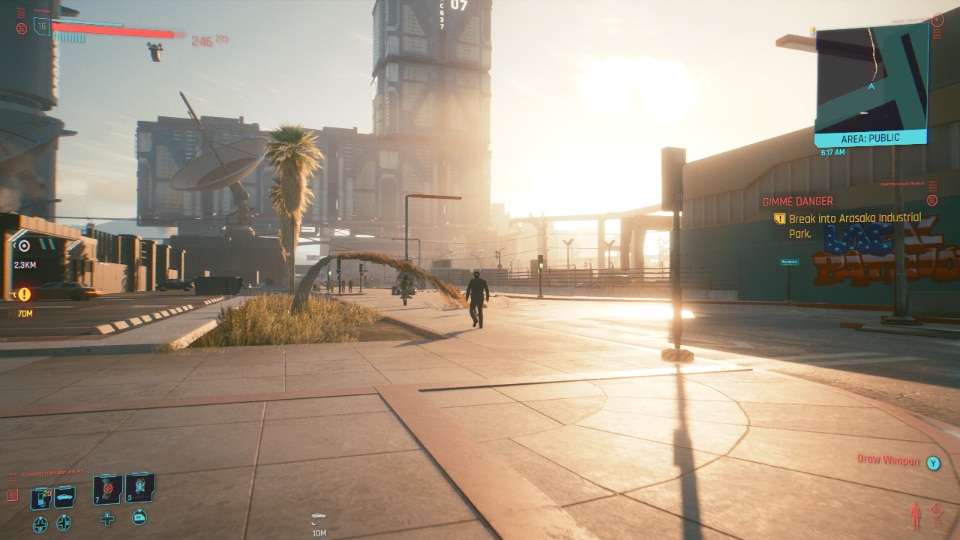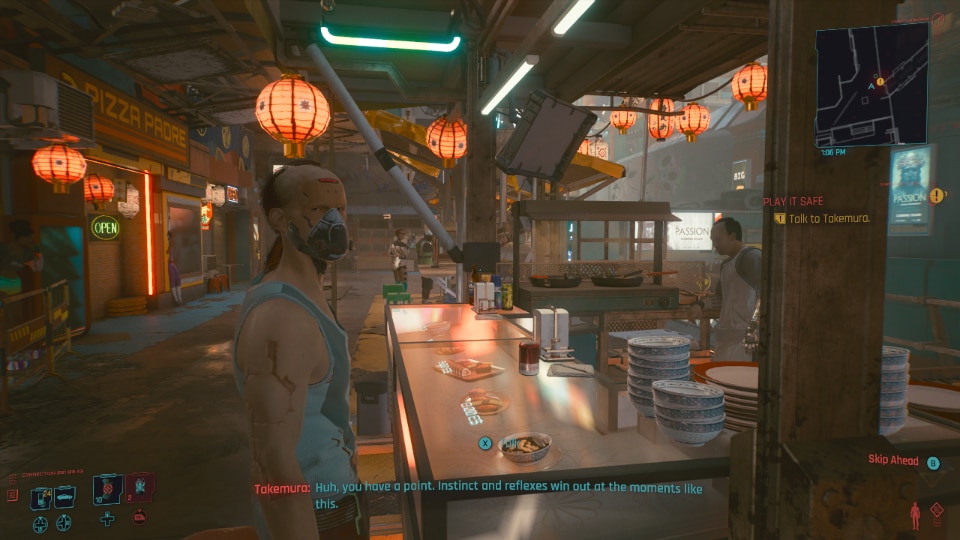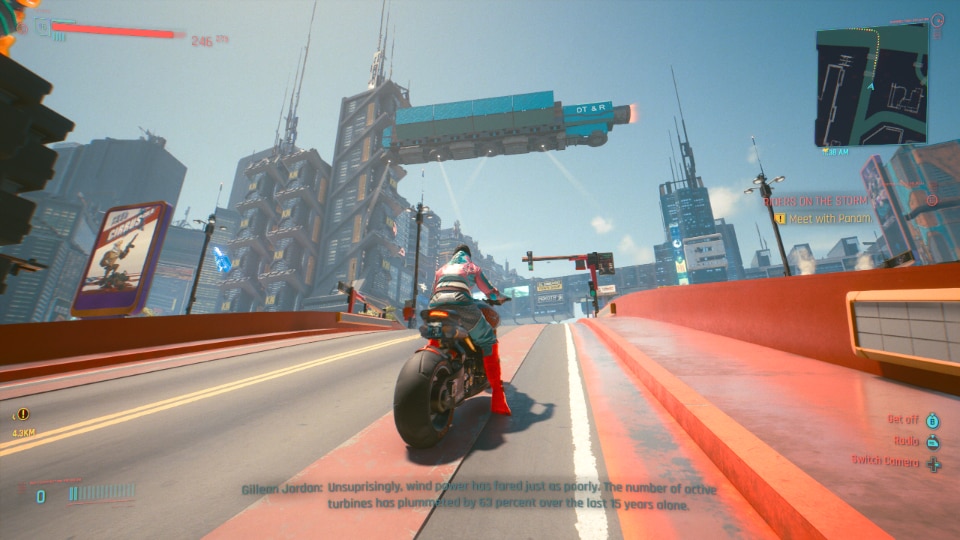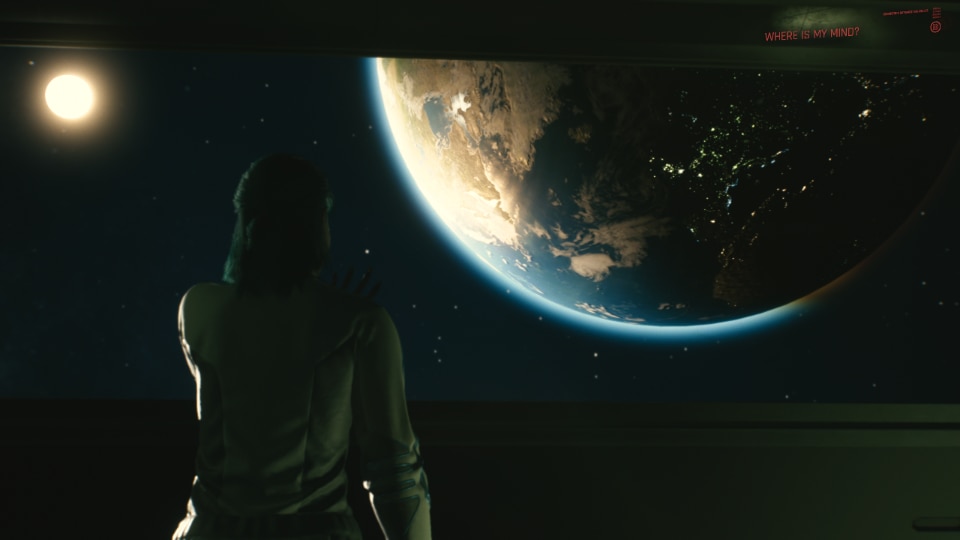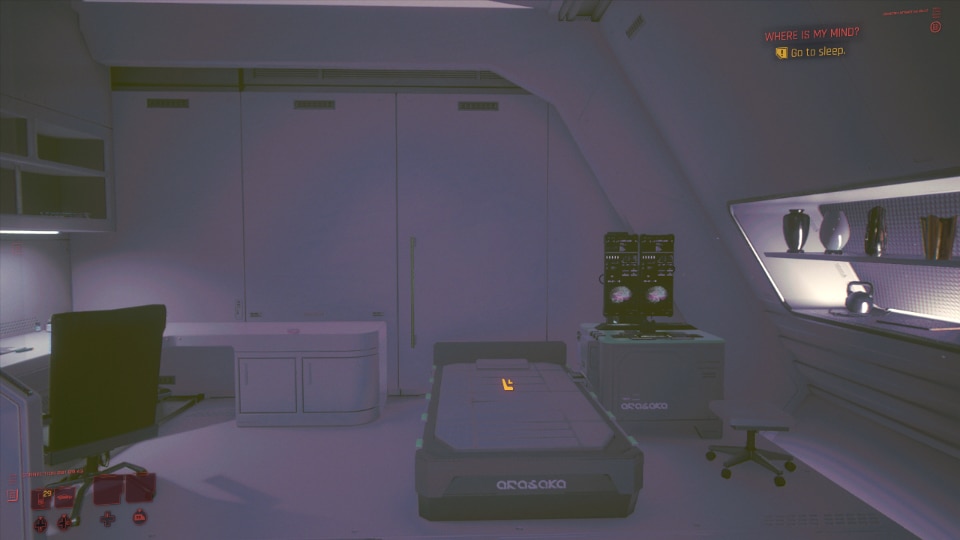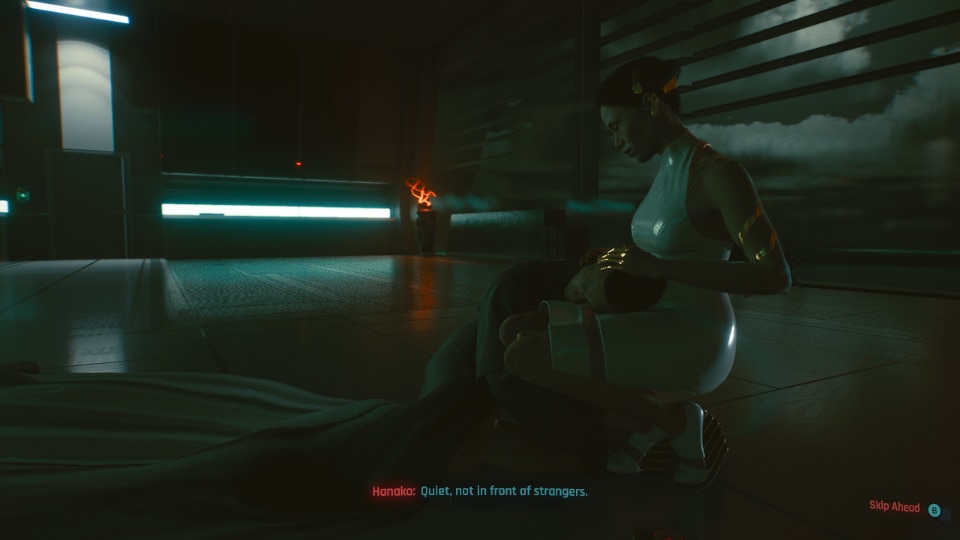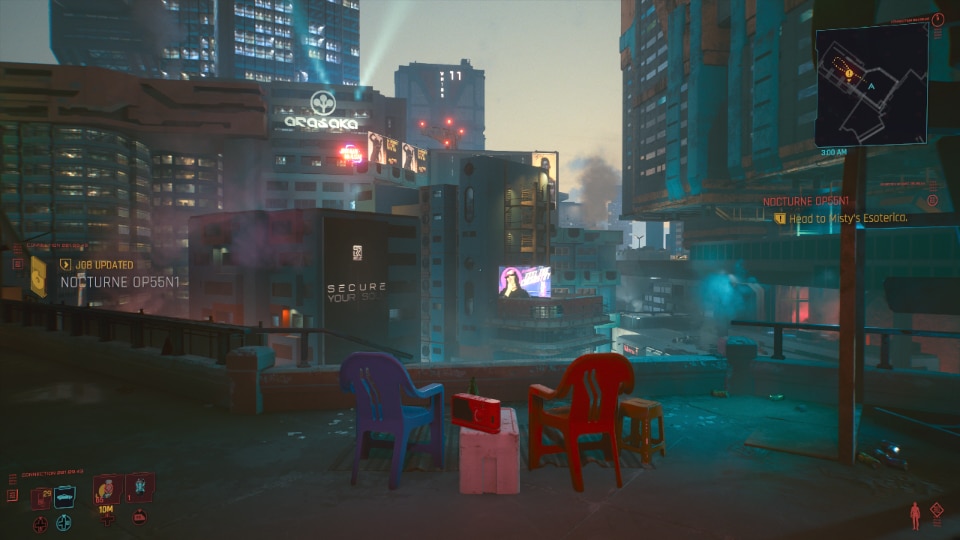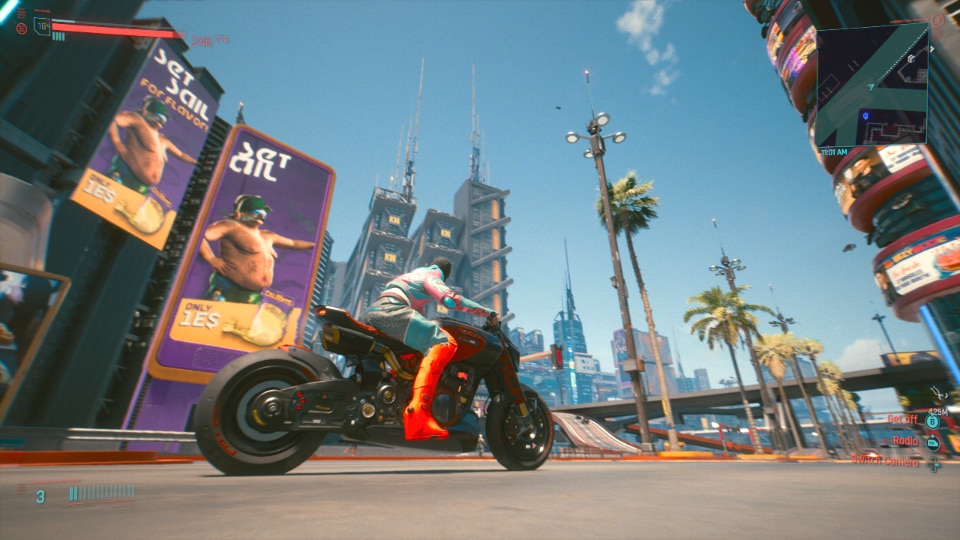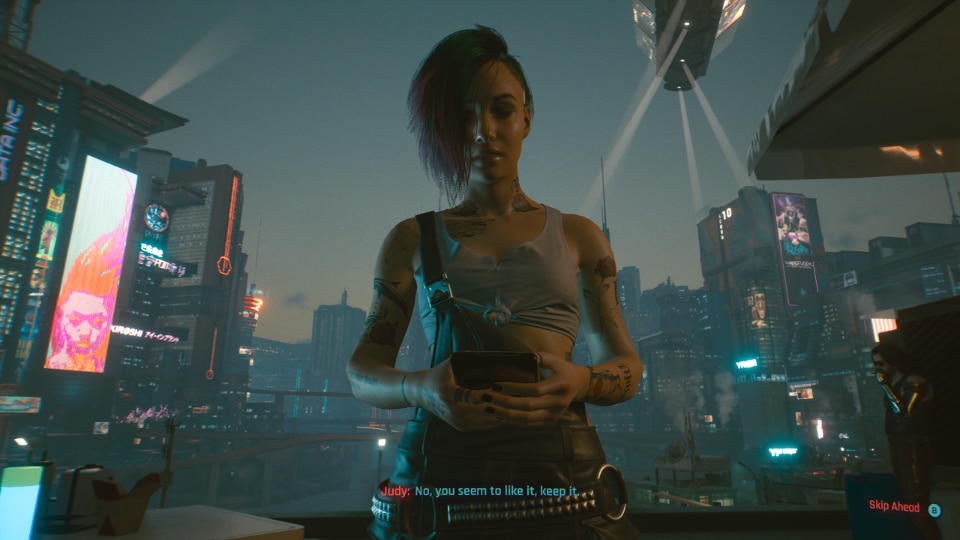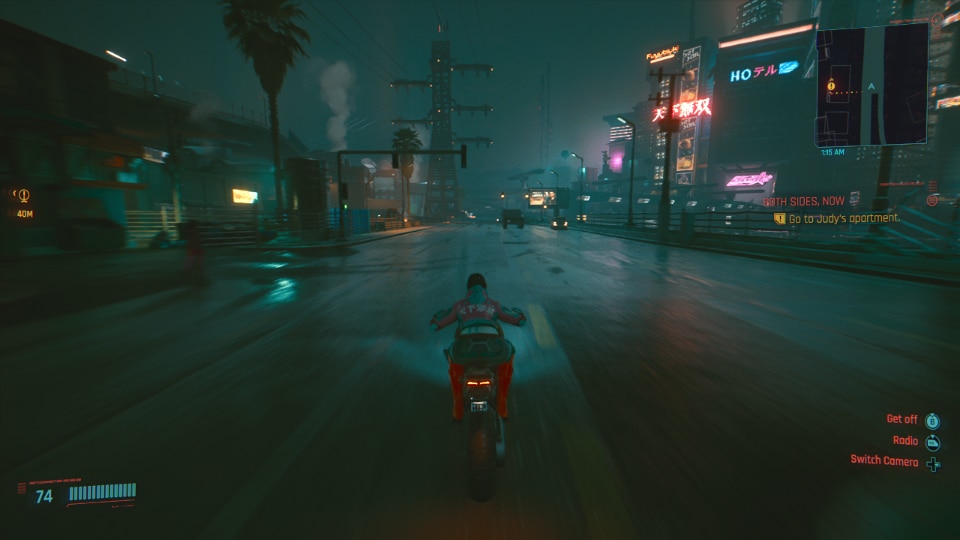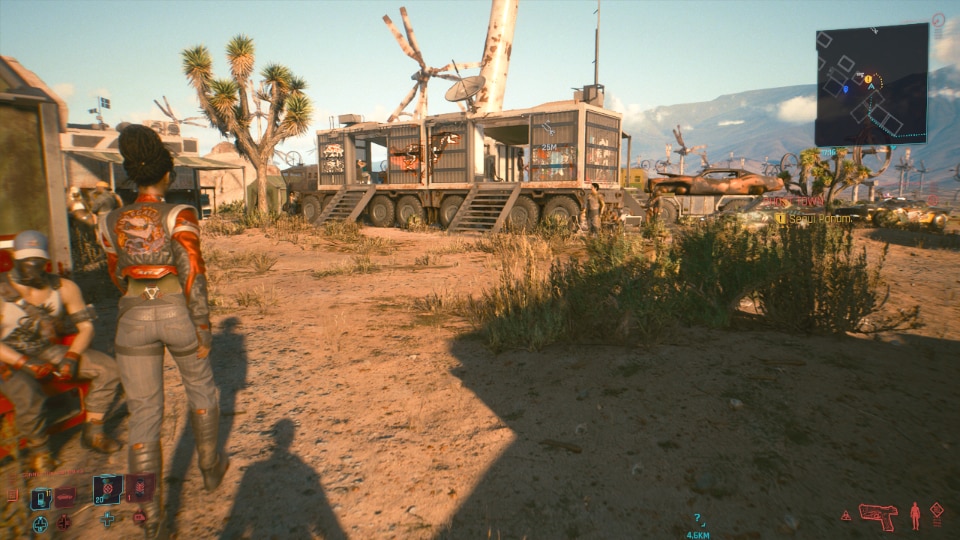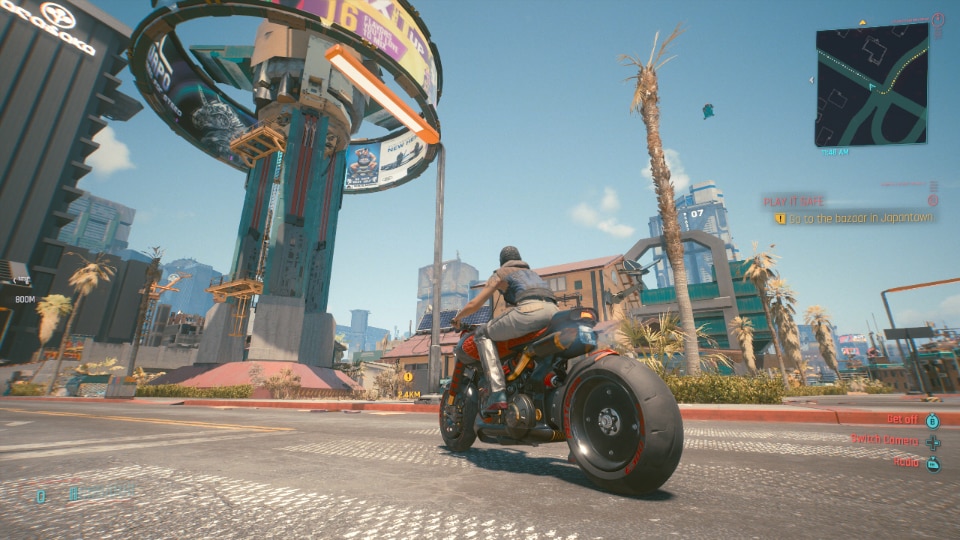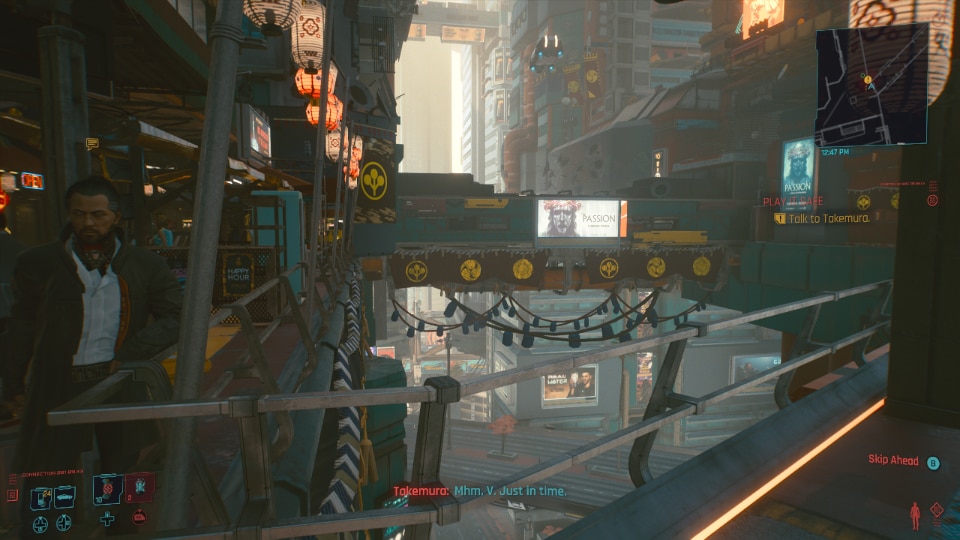What makes an imaginary world “credible”? The possibility of crossing it naturally, perceiving it as ‘alive’, as if it continued existing regardless of our presence. The Cyberpunk 2077’s world-building, the latest creation of the Polish studio CD Projekt Red, is something incredible, especially in terms of urban and non-urban environments, not to mention the highest attention to the design of objects, vehicles, non-player characters and much more.
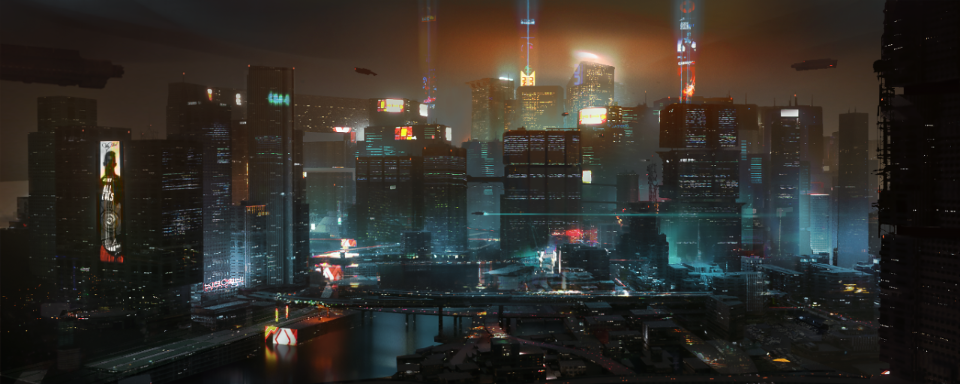
In the initial phase of the game, we are transported in a world with familiar elements, which reminds a lot of Blade Runner, a classic, covered with those right marks that raise an astonishment son of the most unexpected fantasy. But then things get decidedly more complicated, both in terms of inspiration (Mad Max above all) and of design. The future becomes tangible again in its incredible complexity, behind a neon-colored appearance, and the player is constantly assailed by elements that not only appear “new”, rather coherent each other. A dark future that seems incredibly believable and therefore worrying. However, how do you get to such a level of visual complexity? Furthermore, over the years the cyberpunk genre has moved from a ‘futuristic’ to a ‘retro-futuristic’ appeal: how can you update a future, now present, towards something imaginative again? Kacper Niepokólczycki, CD Projekt Red’s Lead Environment Artist, explained exclusively for Domus about the extensive research that underpins such a multi-faceted and dense imagery.
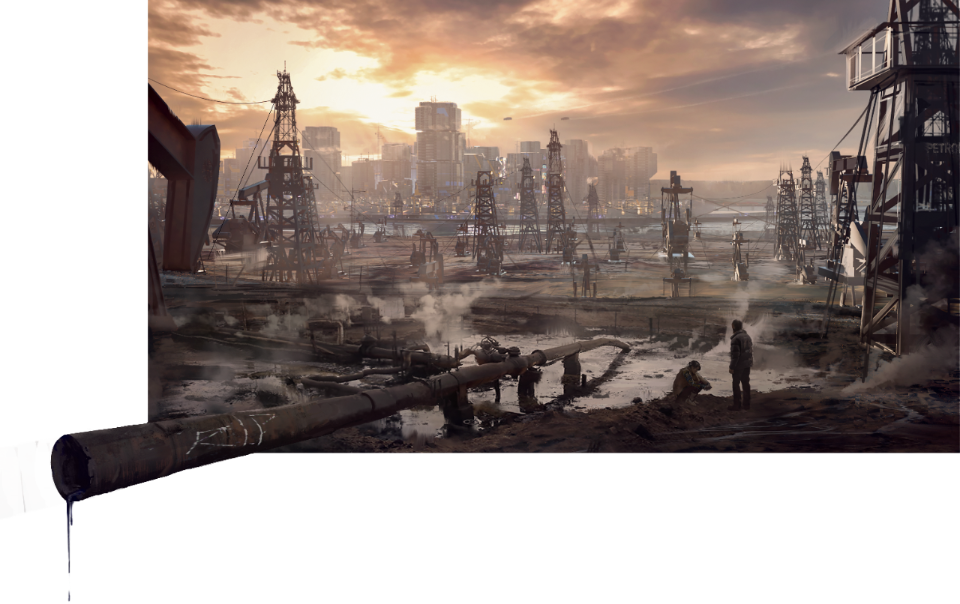
The four styles
“The trend for the “cyberpunk” look and feel has changed a lot throughout the years”, Niepokólczycki explains. “When we were coming up with basic ideas initially, we tried to retranslate what we see today, and how items and objects — such as buildings — could look 50-60 years from now. Our journey was based on our four styles, which are the core pillars for our art direction in Cyberpunk 2077”. These four styles are kitsch, entropic, neo-military and neo-kitsch: “Kitsch describes a slightly richer social layer of our world. Members of this social class would use some cyberware just to look amazing and grab attention. Architecture here would also be very attractive, with a lot of vibrant colors, a lot of shiny materials like plastic or good fabrics.
Entropism, on the other side, is a style based on poverty and a severe lack of resources. In a nutshell, this style visually tells the story of the very poor social layer of our world. Its central motto is ‘Necessity Over Style’. Entropism designs are based on everyday objects that you would see even today, however there is this “cyberpunk twist” from our side like, for example, maybe a mirror has a holographic UI over it, to show the date and temperature outside, or maybe a table has a couple of buttons to control the height of it. Then we move on to Neomilitarism, the style of megacorporations. It is the closest to what you might see in Blade Runner: very big monolithic structures, for example, however in our case, it is much cleaner and smoother. Neomilitarism is very minimalistic, very rich, and very sleek. The size of Night City’s megacorps shows their strength and position in society in a dominant manner. We also put some cultural flavor into designs of this style. Take Arasaka — a megacrop with Japanese roots, or Militech, on the other hand, that is an American corporation. Last but not least is Neokitsch. This is the youngest style in Night City but also a style only for the richest of the rich. People so rich you cannot even begin to imagine what you would do with all the money that they have. For this style, think about the most luxurious parts of our world: we tried to translate those into the world of 2077, using only the most expensive materials in our universe like wood, gold, real animal leather and very unique but slick architecture design”. By the alternation and overlapping of these styles Night City was born.
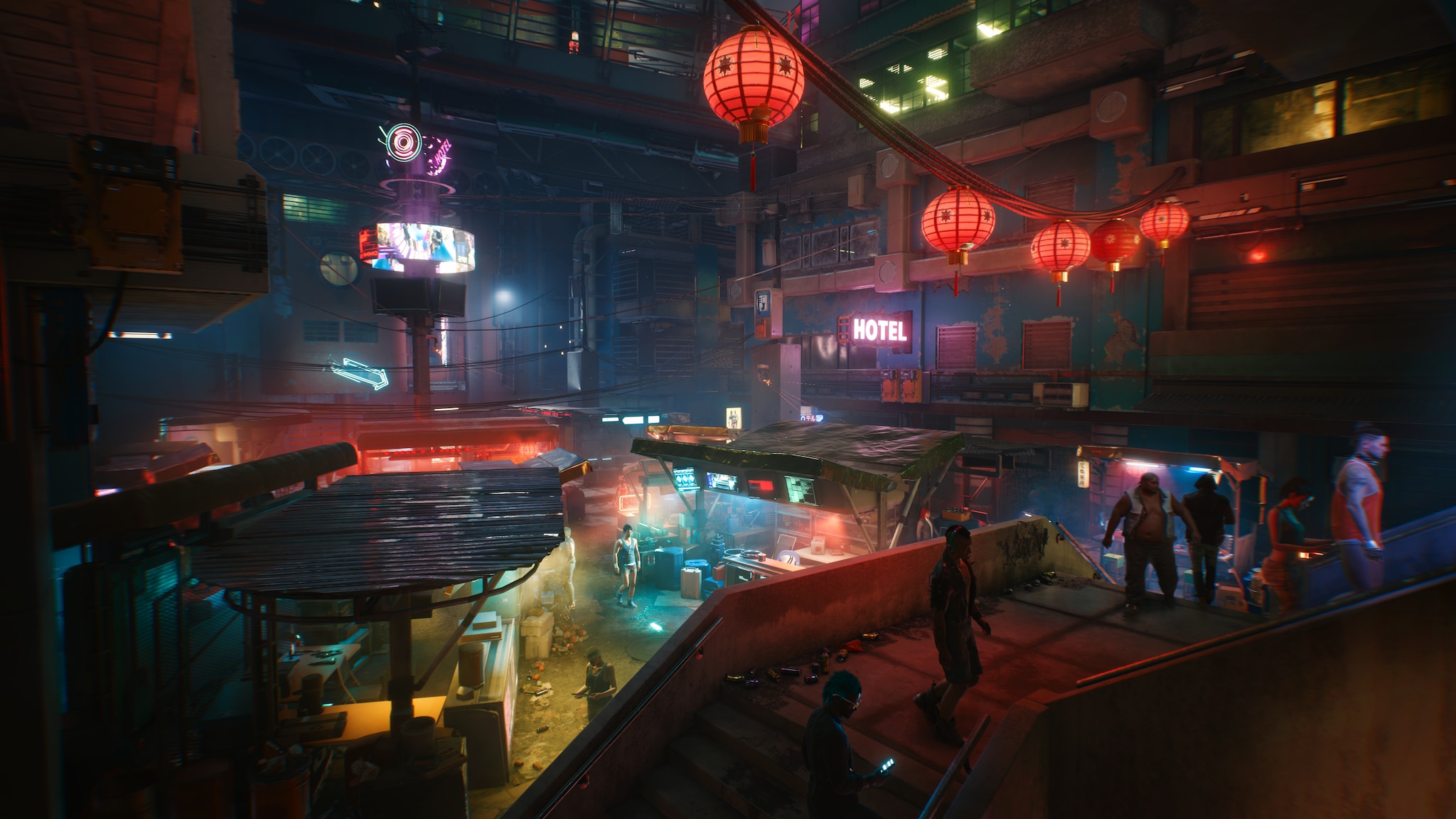
A coherent map
When the player crosses a world and actively acts towards the environment and its inhabitants, the credibility of the space in which he or she moves is a fundamental aspect for a successful gaming experience. If in architectural terms the concept of “map” is more linked to a simplistic and non-technical imagery, for video games it represents a fundamental tool. And the Cyberpunk 2077’s map is undoubtedly immense. Apart from the possibility of travelling quickly by other means, moving from one point to another, even within the same area, requires time and knowledge of the roads or shortcuts, a proactive commitment repaid by extreme care in terms of scaling and coherence between full and empty spaces, and therefore among buildings, environmental elements and the distances that separate them. “We divided our world into two design themes”, Kacper Niepokólczycki says. “The first one is the open world areas, where the player can just wander and explore Night City or the Badlands; these are places where you can take a break and invest time into admiring those beautiful views, and immersing yourself in the world. These are fairly easier to build in terms of spaces and gameplay areas, as they were mostly art driven. The main focus here was to build good-looking, believable spaces that are connected to those more complex, action-heavier spaces. Artists can be more open to creating breathtaking views in these areas. The hardest part here is to create connections between quest locations. Let’s say you have a driving sequence in a quest that has to have very specific timing to fit a dialogue sequence. From an art perspective, it is a cool task, yet still very demanding as you need to support all scenes with attractive and effective composition and intersecting views”.
The second design theme, obviously, includes all the spaces where combat takes place, or anywhere that is a quest location. “Those were designed to support various combat scenarios. Basically, these areas have to play great, while fighting or exploring along a very precise quest path. Those were designed first by Level Designers. Once the layout, idea, and gameplay loop were approved, then the artist takes over and makes this place look believable and beautiful visually, making sure the level design is not affected while also creating a breathtaking visual experience which supports a specific quest’s story”.
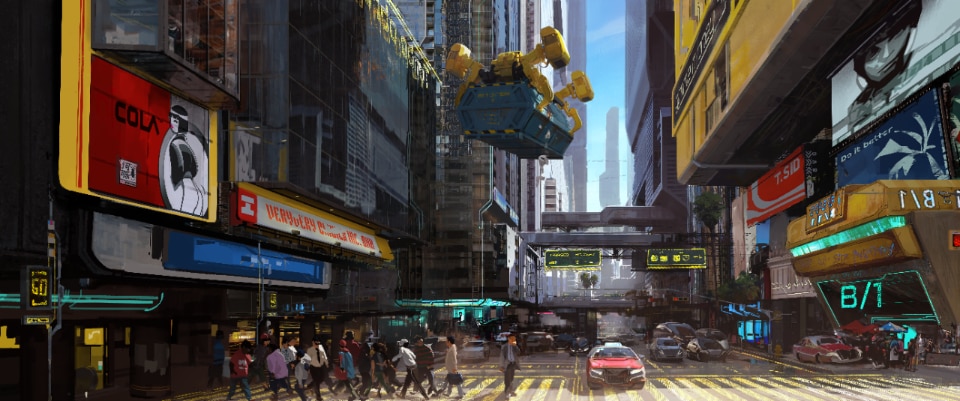
Exploring Night City
“We designed Night City to feel like a real, logical world — especially concerning traffic flow and the feeling of navigating the city, because we wanted to encourage players to take an active part in that”. From the very first entry into a new area, the visual rendering is impressive, and remains so over time, never boring in its complexity. You would lose hours observing every detail, or even just admiring the city ‘living’ while taking a break, sitting somewhere.
During several missions, you can enjoy the journey. “These quieter moments where you are simply a passenger give you a great opportunity to take in the scenery, engage in conversation with the driver, and take in your life in the dark future without worrying about anything else”.
Designing a city from the scratch
Night City was created without relying on urban schemes belonging to real world locations. “There are few reasons for that. The strongest one being our need for creative freedom and creating something very unique. Night City had to be a very dangerous character itself. Sure, we used a lot of references and solutions from real life cities like L.A., Detroit, Tokyo, and Hong Kong to name a few. However, everything, from the city skyline, the look and feel of the six different districts, the views from key locations in the world, along the roads and highways — we wanted complete control over it all. Basing our work on real life cities would create a lot of restrictions, or would force us to re-shuffle. We prefer a blank canvas”. Night City is a huge place with a lot of different themes, the Lead Environment Artist explains. The Cyberpunk 2077’s future is multifaceted, relying on different architectural and artistic reference styles. The interiors and exteriors aesthetics of the individual of Night City’s districts are varied. “One of our goals was to create very distinctive visual language between districts and social layers. To achieve that, we put together a very talented team”. Urban design experts were involved ensuring that Night City looks credible, moving as a real city. “These designers made sure that tons and tons of highways and roads actually make sense. They looked at things like where the harborwould make sense, and where industrial districts would be in relation to offices and commercial areas in Night City’s downtown”. When it came to the details, the four-styles rule came into play, which “maintained a consistent visual language throughout the game world”.
Sure, we used a lot of references and solutions from real life cities like L.A., Detroit, Tokyo, and Hong Kong to name a few. However, everything, from the city skyline, the look and feel of the six different districts, the views from key locations in the world, along the roads and highways — we wanted complete control over it all. Basing our work on real life cities would create a lot of restrictions, or would force us to re-shuffle. We prefer a blank canvas
However, all rules are created to be broken. And the four styles have been variously reinterpreted during the game world development. “So, for designing interiors or exteriors, we had huge support from a very talented Concept Art team to help establish the direction in terms of the style being used, from big ideas for shapes and forms for big skyscrapers, through ideas and designs for hotel interiors, apartments, and streets to name a few — all the way to very small props like tools or silverware. Using those concept arts, our general art direction, a lot of references and our own creativity, 3D Environment Artists would build geometry and decoration assets. Those are, to put simply, “Lego blocks” for the Level Art team, who put those pieces together to create the whole world the player is exploring. Of course, theyare also guided by all the art direction, concept art, references and the creative approach established beforehand”. A team effort that involved also people graduate in architecture, interior design, and even in garden and landscaping design. “Input from those teammates was key to making our world the most believable it can be in every little aspect”.On the other hand, artists without design or architectural skills, “yet with their own thirst for improving — and their inspiring creativity — they were able to push the art quality and believability through the roof”.
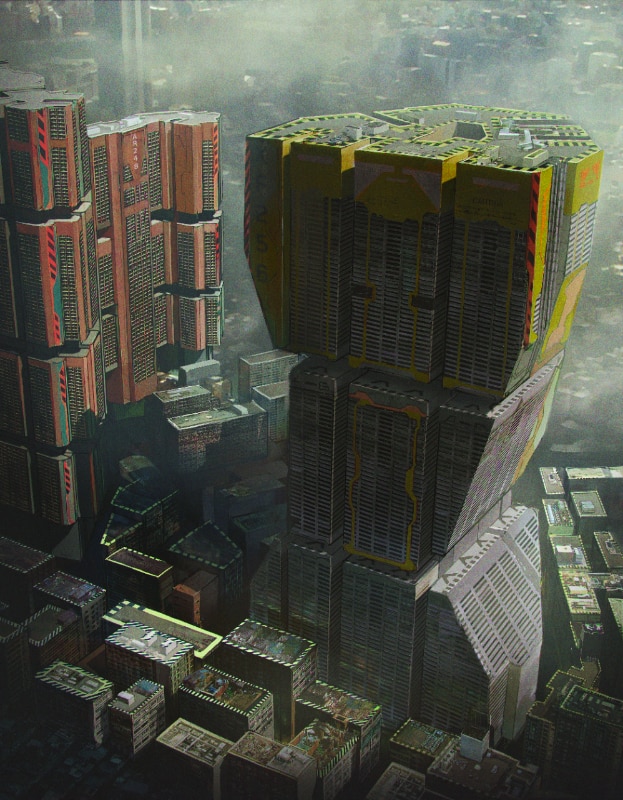
A multilayered city
Variety does not apply to the set-up in map only. The Night City’s entire elevation, both in terms of perspective drawings and axonometric cutaways, is the piece that adds credibility to the three-dimensionality of the architectural and urban space. In creating the game, the designers have literally exploited every inch of available space, both as a simple architectural backdrop and as a space to interact more deeply with, through mechanisms that recall the containment potential of the Chinese boxes: self-contained mini-modules within larger macro-modules, a structure repeated over and over again. Underground tunnels, buildings reaching up to the sky, lifts and infinite staircases... verticality is an integral part of Night City’s city life, with references to precise social meanings that have become archetypal: “Poorer residents mostly live at the ‘bottom’ of the city, looking up to the rich who operate out of looming skyscrapers, or fancy villas in the hills. This ‘lower rung’ of society is always looking up, dreaming they can one day join the upper echelons”. At the same time, the verticality “helps to create much more interesting environments for players to explore, while also creating a lot of different paths and interesting vistas, too”, and therefore was an obsession from the outset for Kacper Niepokólczycki, who urged his team to include it wherever possible.
The case of Japantown
A central episode of Cyberpunk 2077, in which verticality as a metaphorical construct and as a game environment intertwine creating a memorable sequence is the Japanese Quarter Parade, “a cyberpunk takes on a traditional parade we know from our world — instead of being dragged by cars and carried by people, it is flying through the air on a platform. Players have the possibility to see it from all angles and heights thanks to the verticality of Japantown. For this quest, players are guided with lights, colorful pipes, and the gameplay path was created to support those great views of the parade going slightly over your head, or you jumping above it. It was really important to create smaller spaces between big open areas, that focus on guiding players toward the goal”. Japantown is one of Night City’s most distinctly vertical districts, and Niepokólczycki describes it as a place he visited, rather someone who participated in creating it: “The district is packed with people from both the lower and higher strata of Night City. The social layers are mixed. It is overcrowded, and that is why those who were able to move up the social ladder started populating geographically higher parts of the city. To support their needs, shops, bars, and vendors began opening there. Bridges from one building to another were built, and it created kind of its own ecosystem above”.
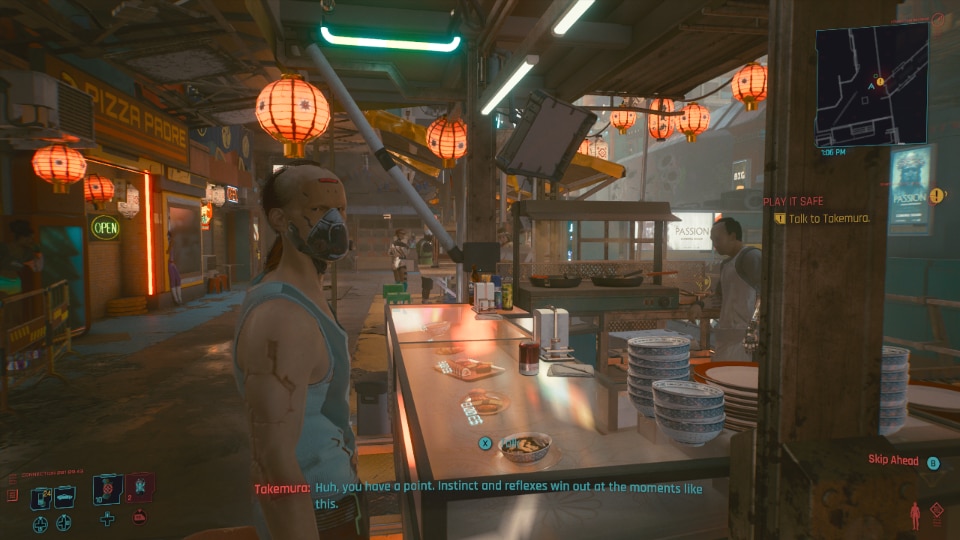
Public and private space
V, the game’s protagonist, lives inside a building that reminds us of the gigantic social economy housing projects that characterized a certain urban geography during the last century: a huge dormitory, a pale echo of the hof and unité d’habitation utopian dreams, where more or less legal activities spring up among the interstitial spaces and extend into cramped and obscure areas. A large housing complex “with shops, gyms and whatever you would need to exist, without even a need to get out of that place”. For Niepokólczycki, it is not so science fiction, all he had to do to build it was looking at our world “and put it on large-scale”.
In a way, we are really living in cyberpunk times today. We, as a dev team, just took our present times and upgraded it a notch or two
The continuous alternation between public and private spaces and the easy penetration of the latter is a key aspect of the gaming experience. The cyberpunk trace adds the possibility to invade other people’s privacy even more, by easily intruding into the surveillance networks of private properties. But is it really so different from our present? “I think what we can see even today is exactly this border between private and public life becoming more and more blurred”, Niepokólczycki explains. “In a way, we are really living in cyberpunk times today. We, as a dev team, just took our present times and upgraded it a notch or two”.
The term cyberpunk was coined in 1983, its literary masterpiece, William Gibson’s Neuromancer, was published in the following year. Unlike the great classic American science fiction, cyberpunk told of an imminent and dystopian tomorrow, a 1980s’ dark acceleration. Cyberpunk 2077 takes up that lesson, with all its critical scope: “we just knew that those topics and themes were ones we would like to raise”, Niepokólczycki concludes, “and we wanted Night City to feel like it is evolving into this being that is affecting your life on every corner”.


